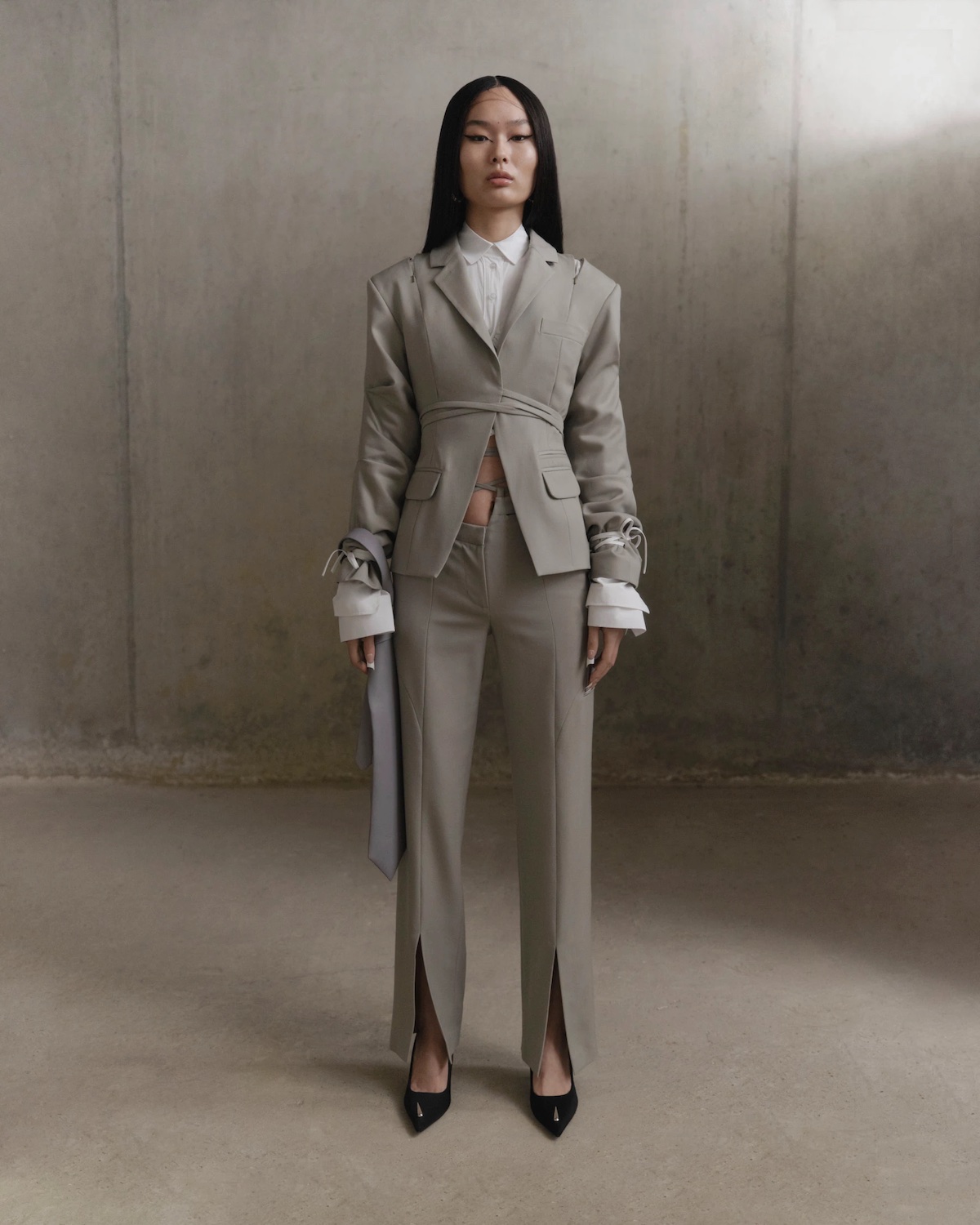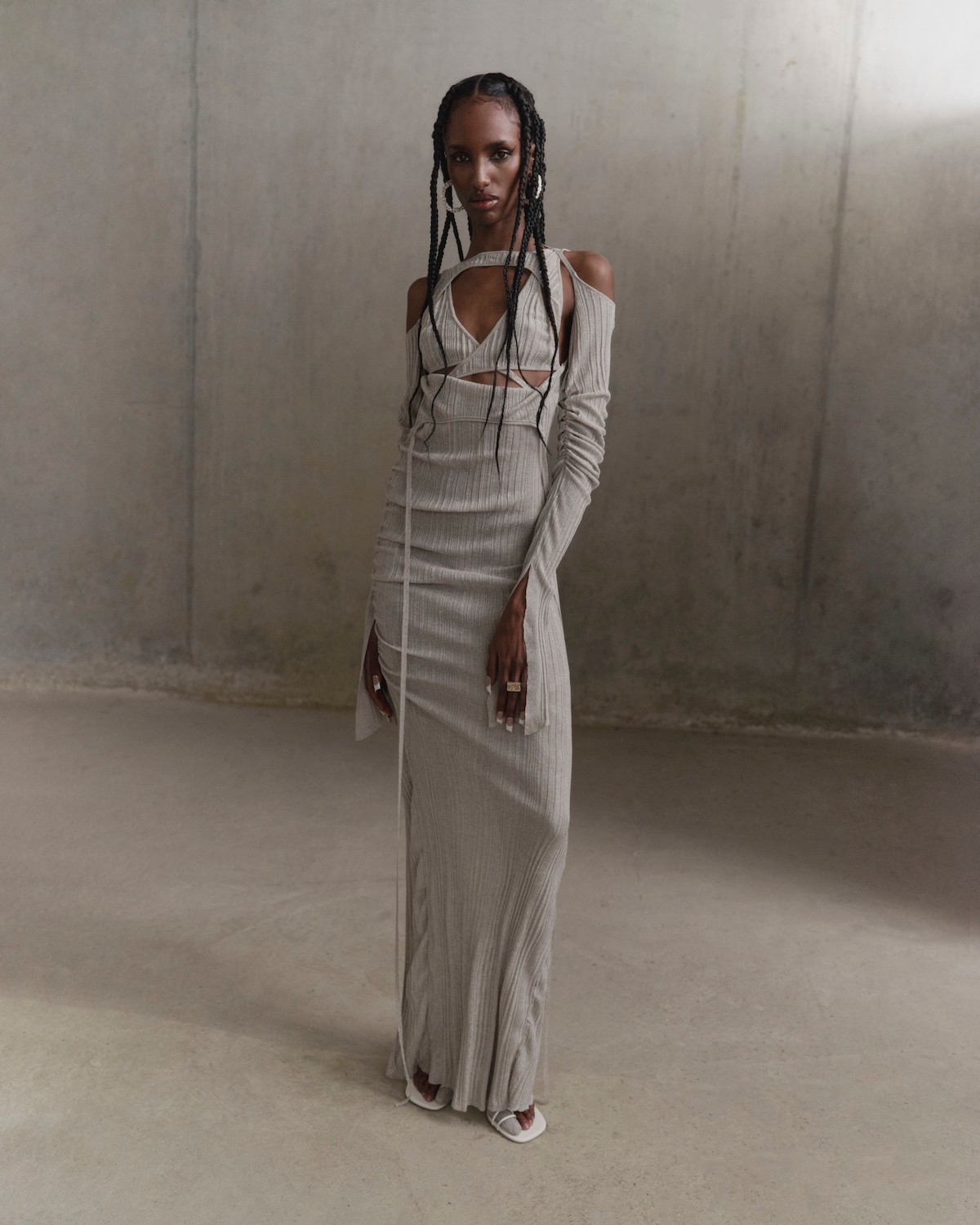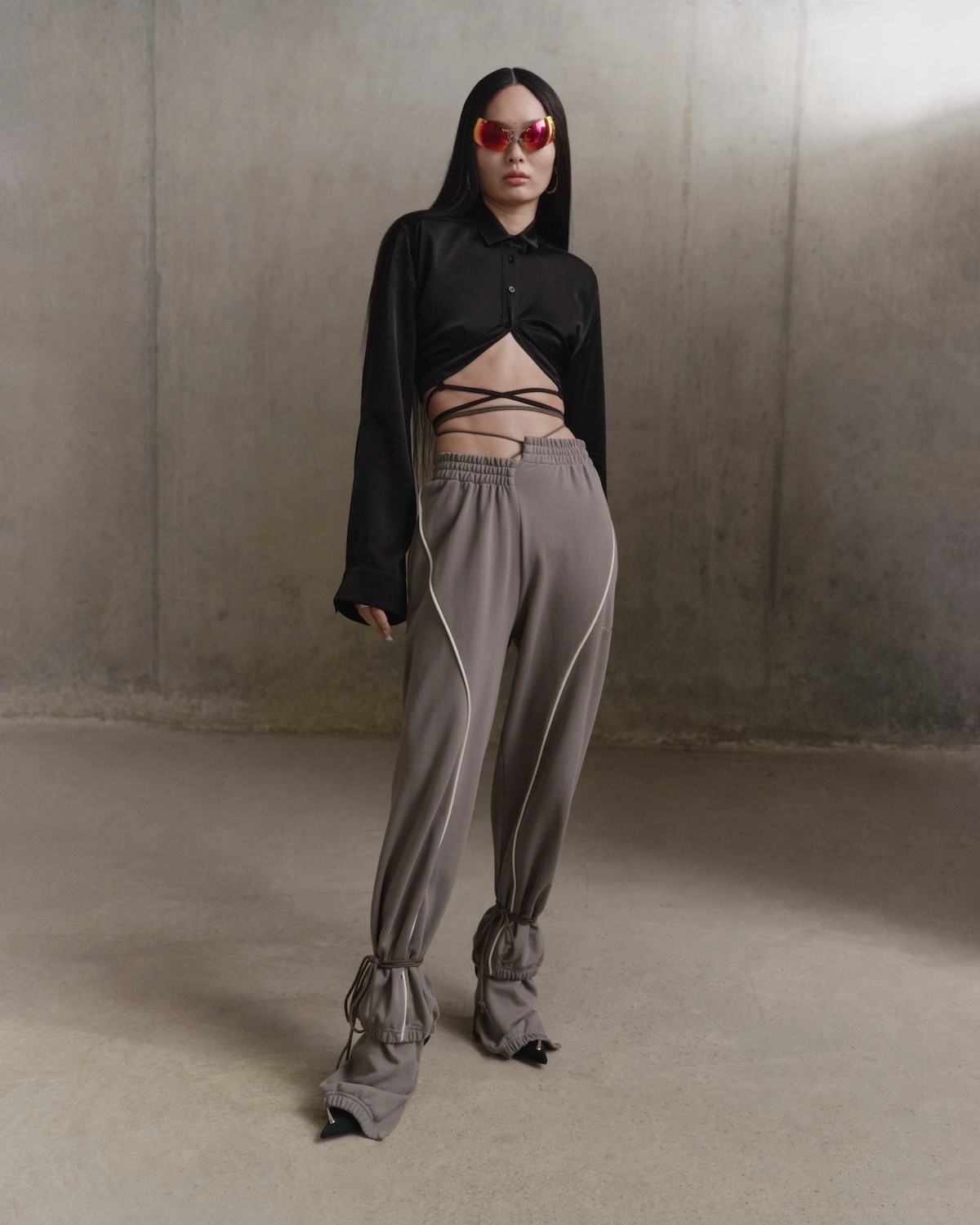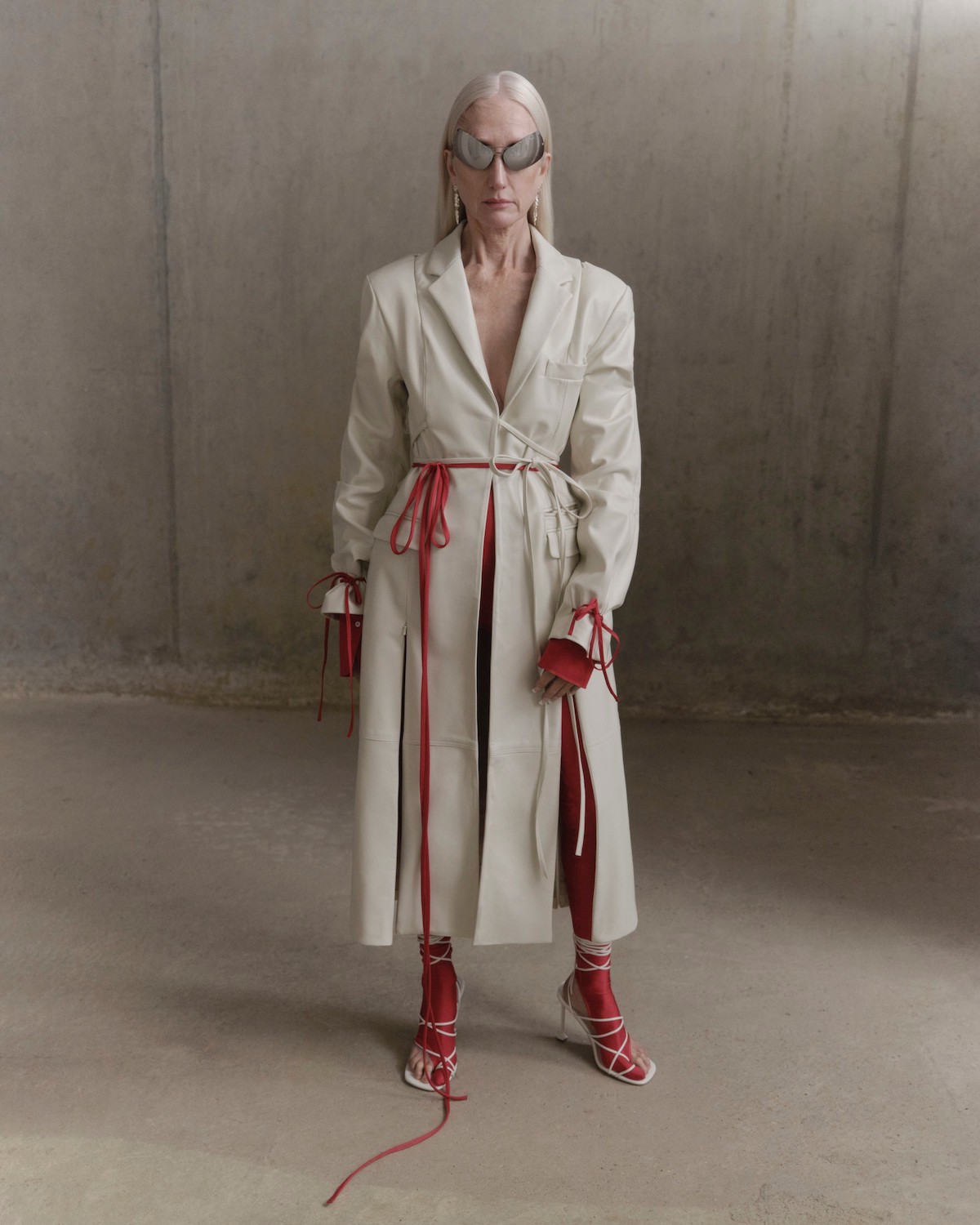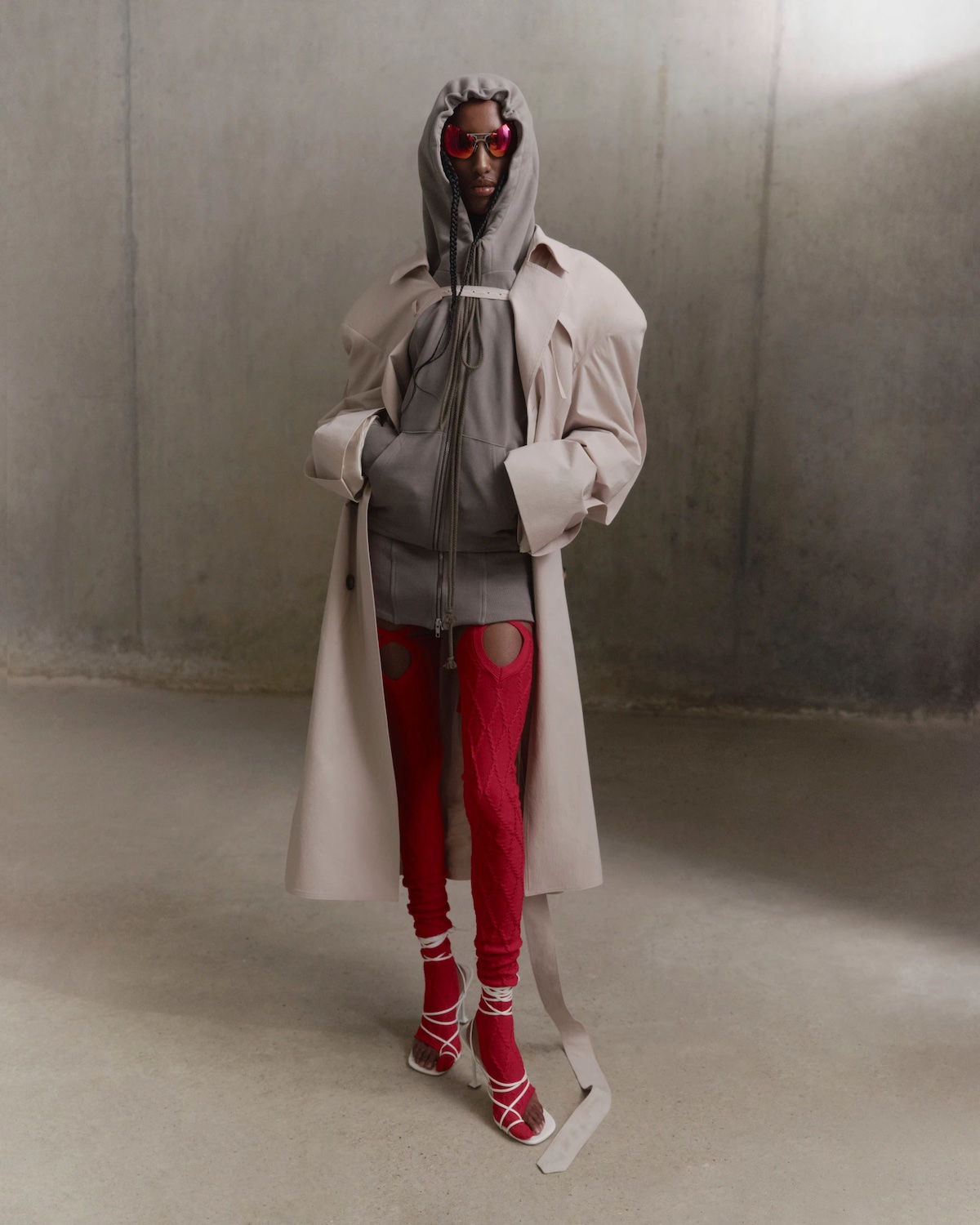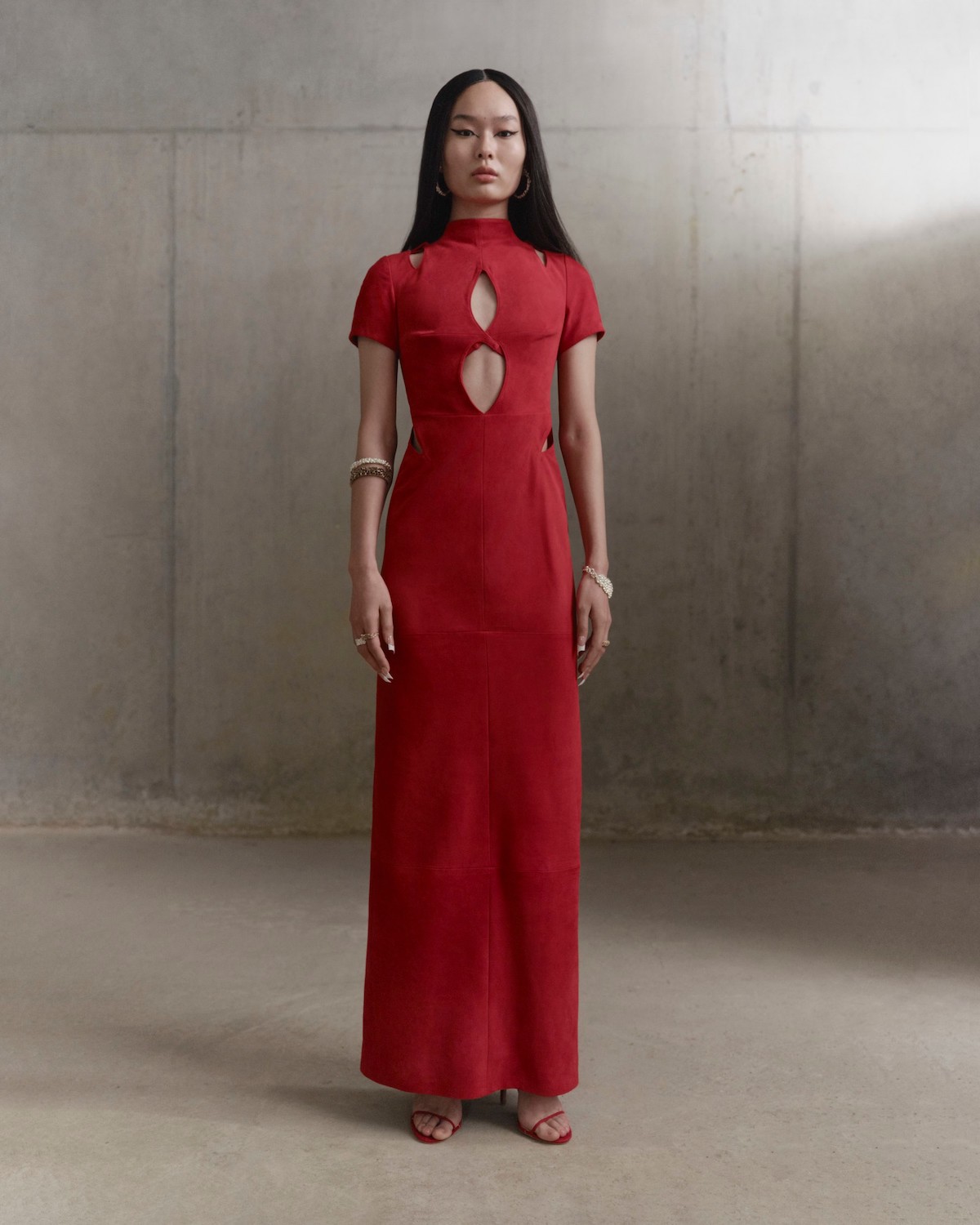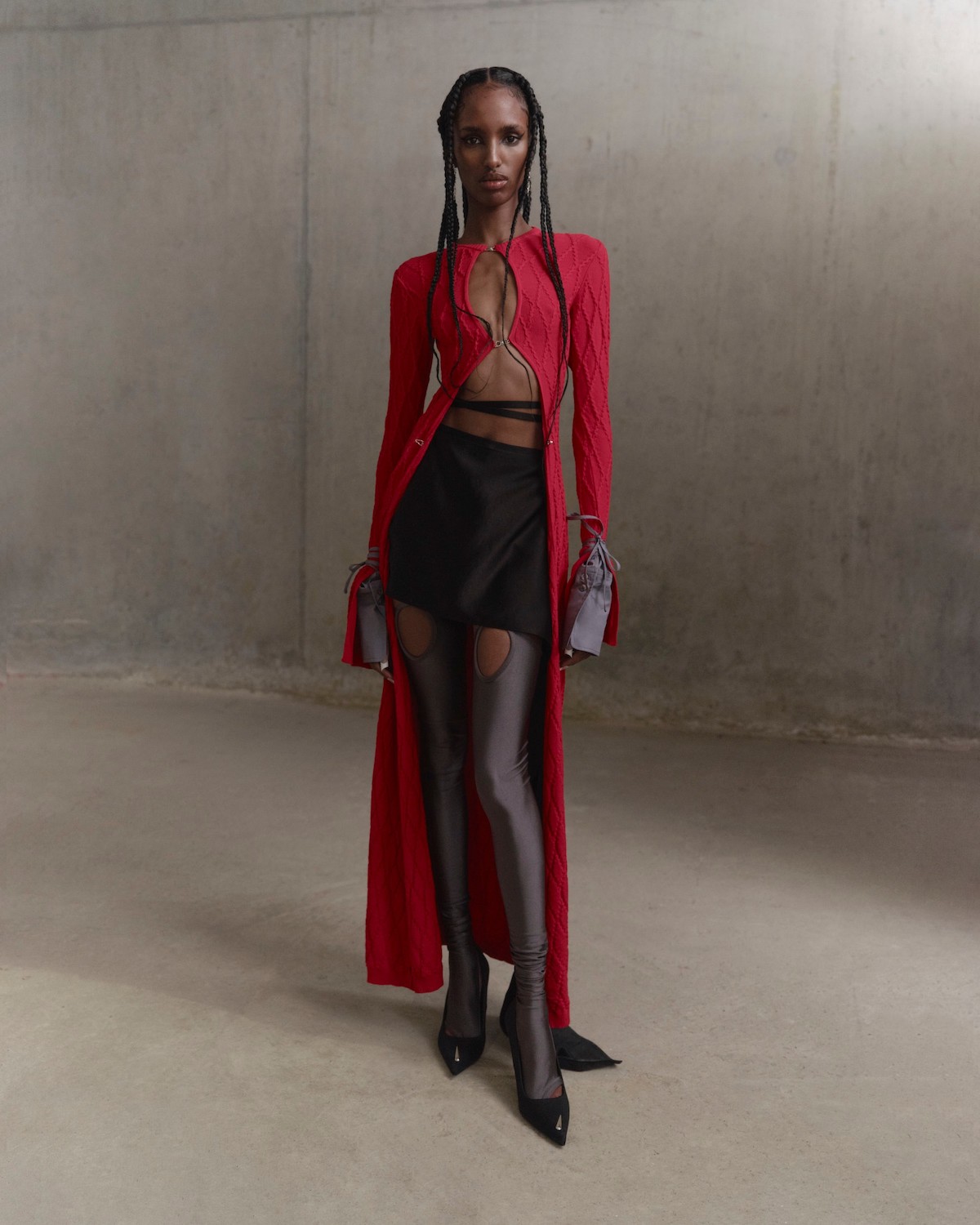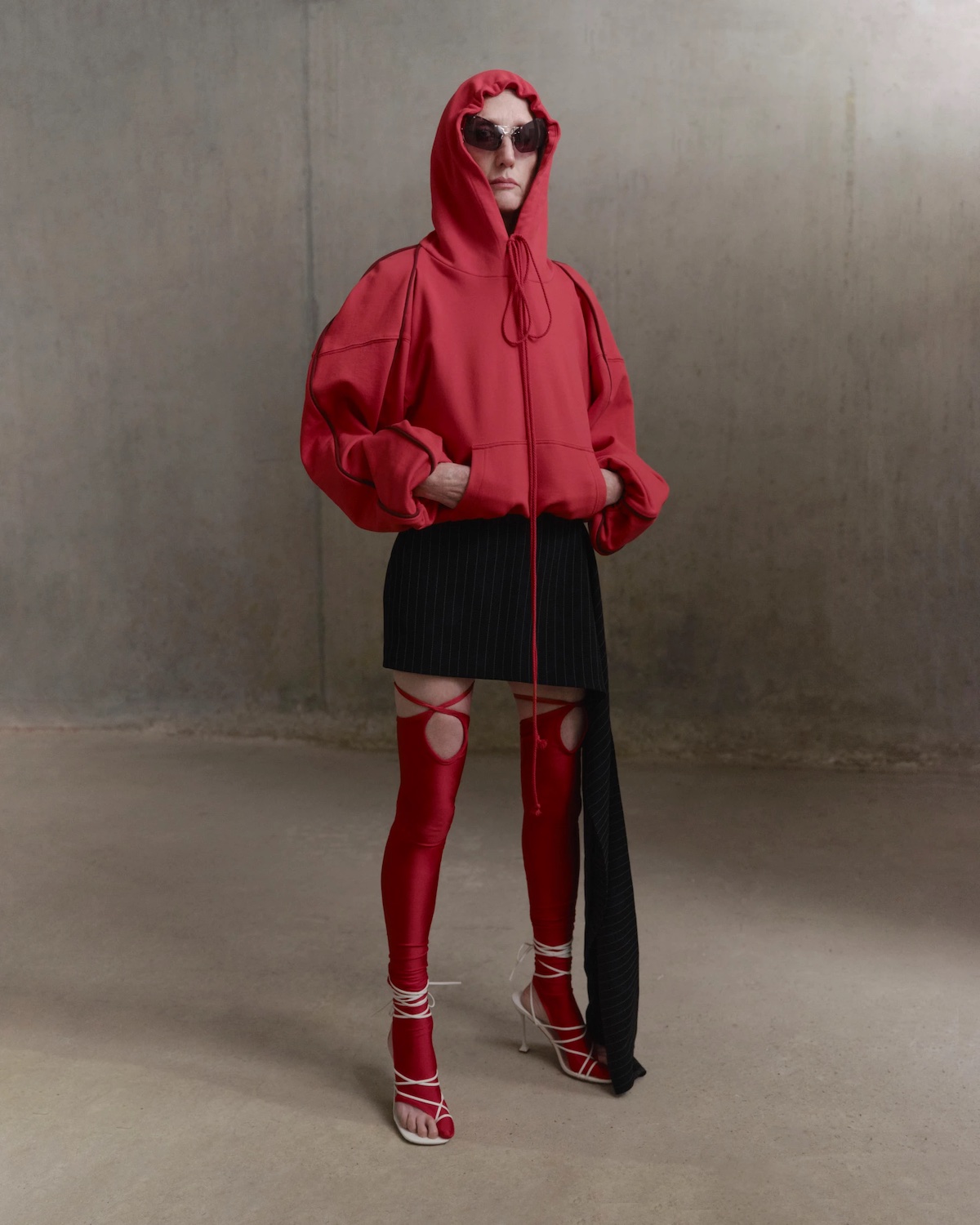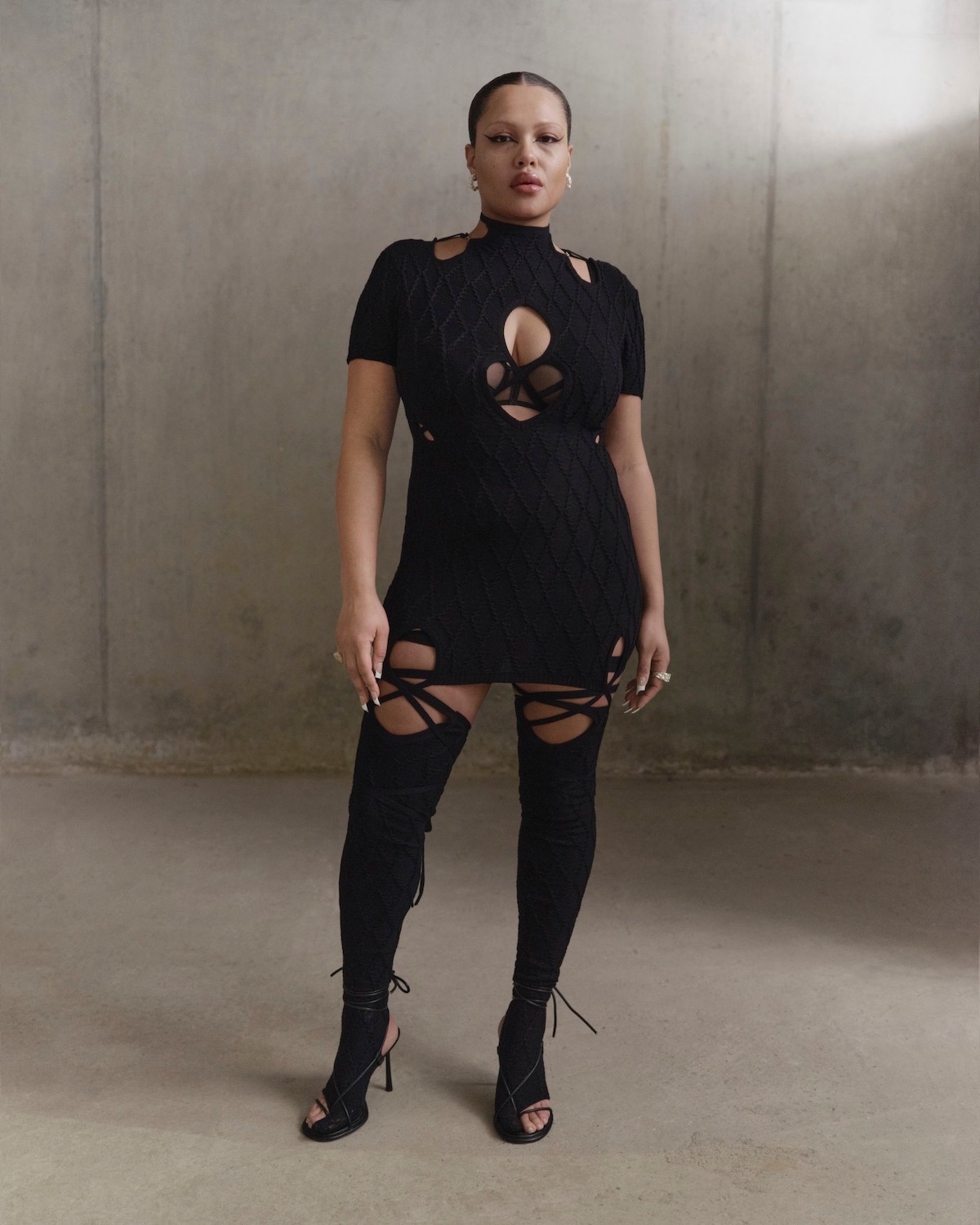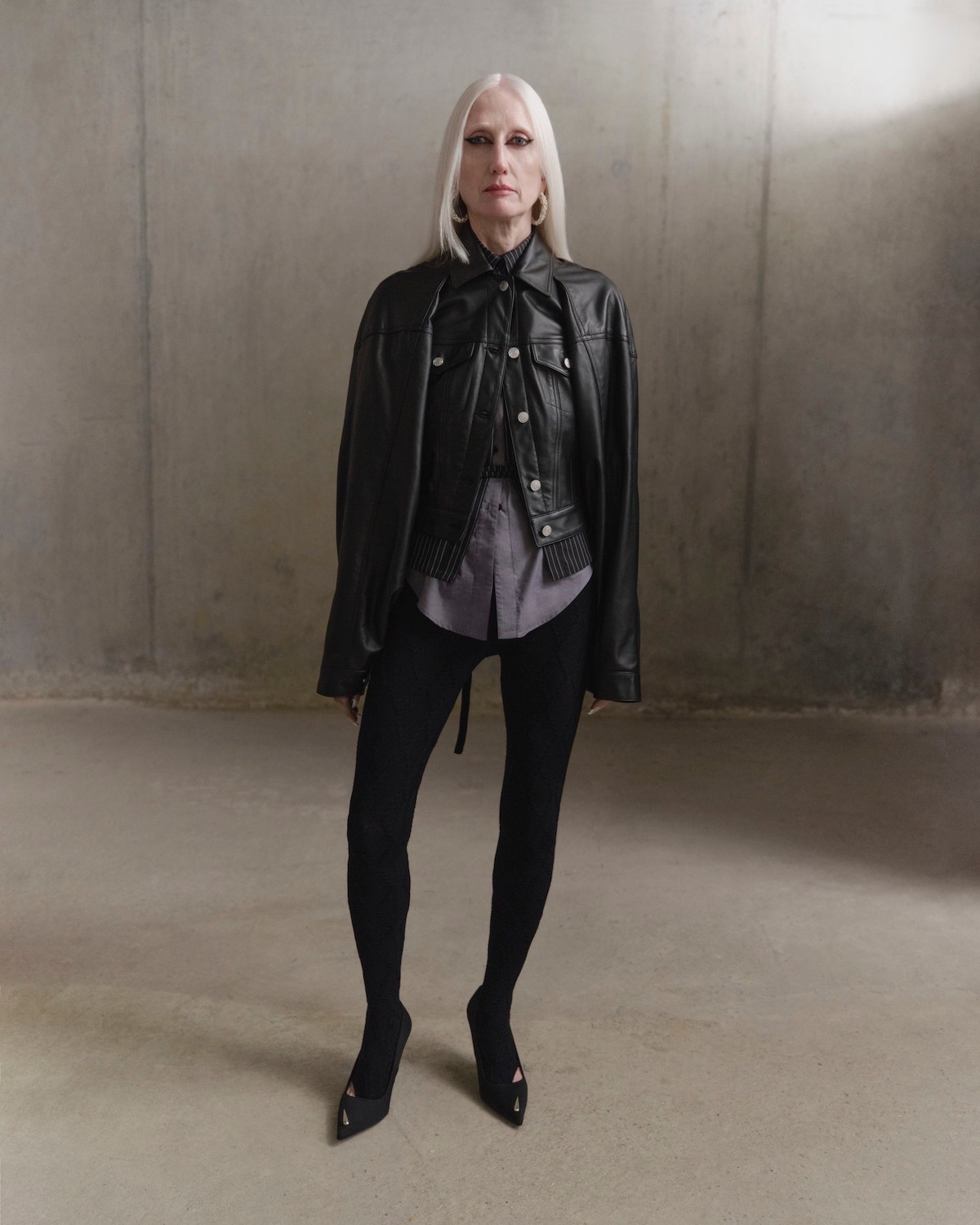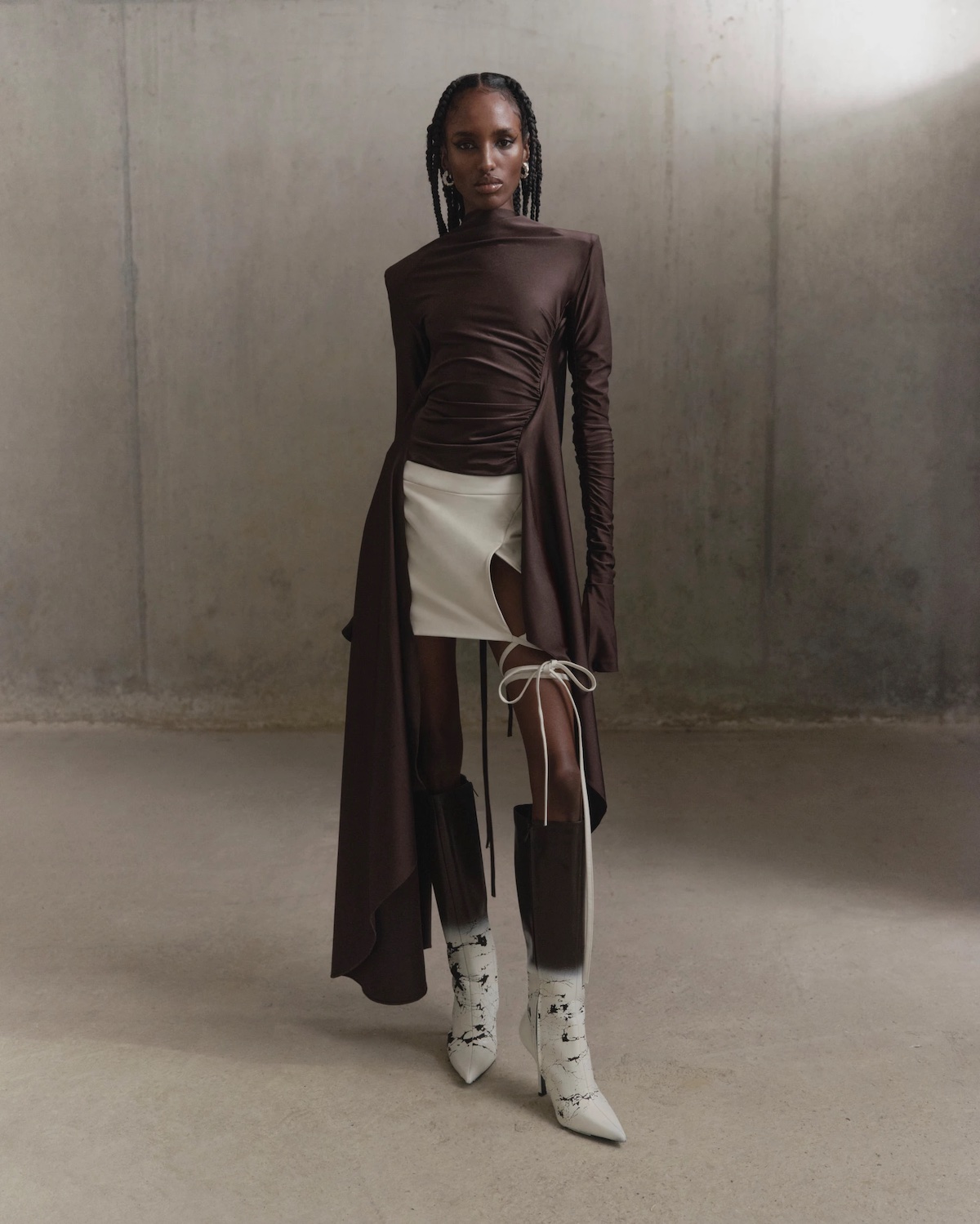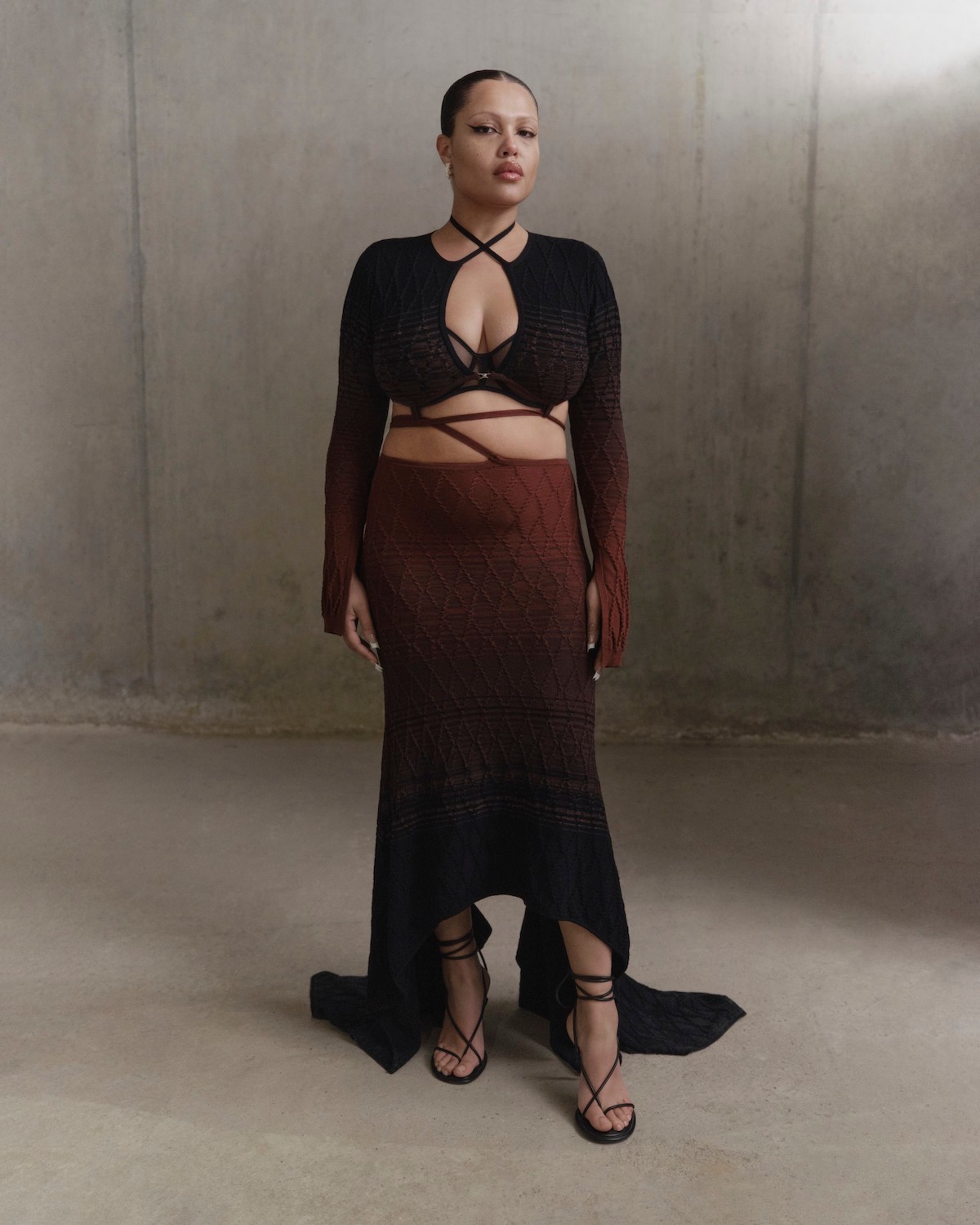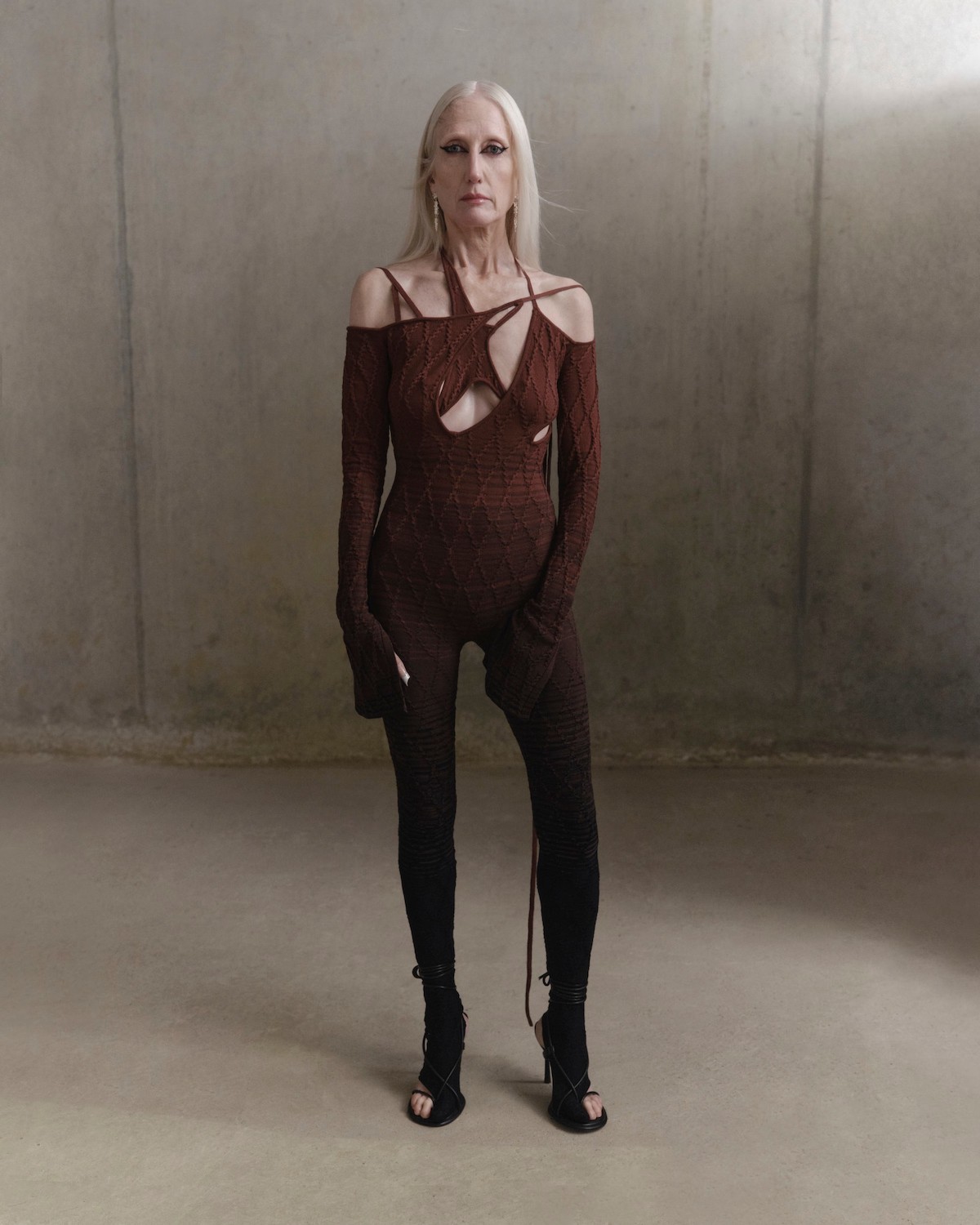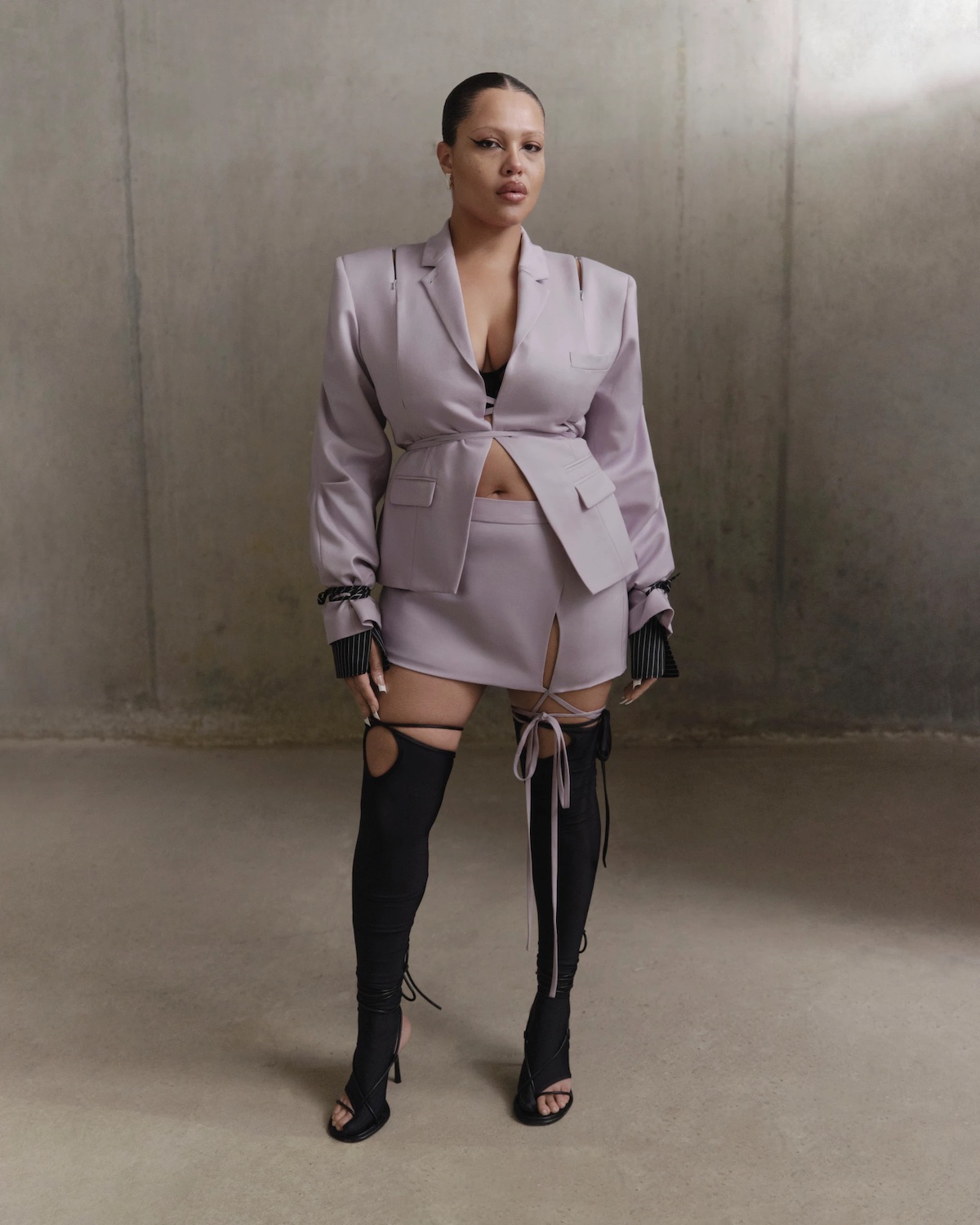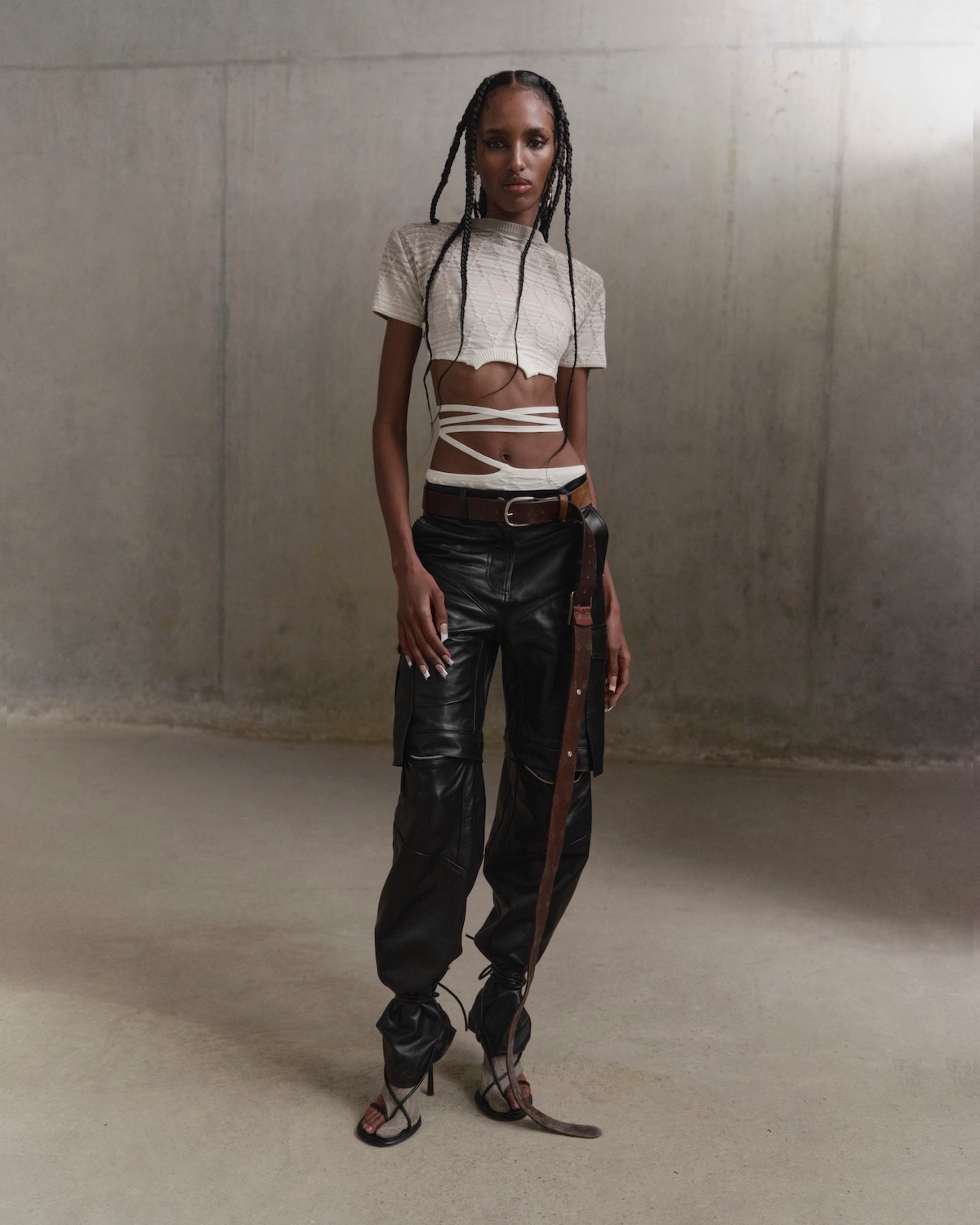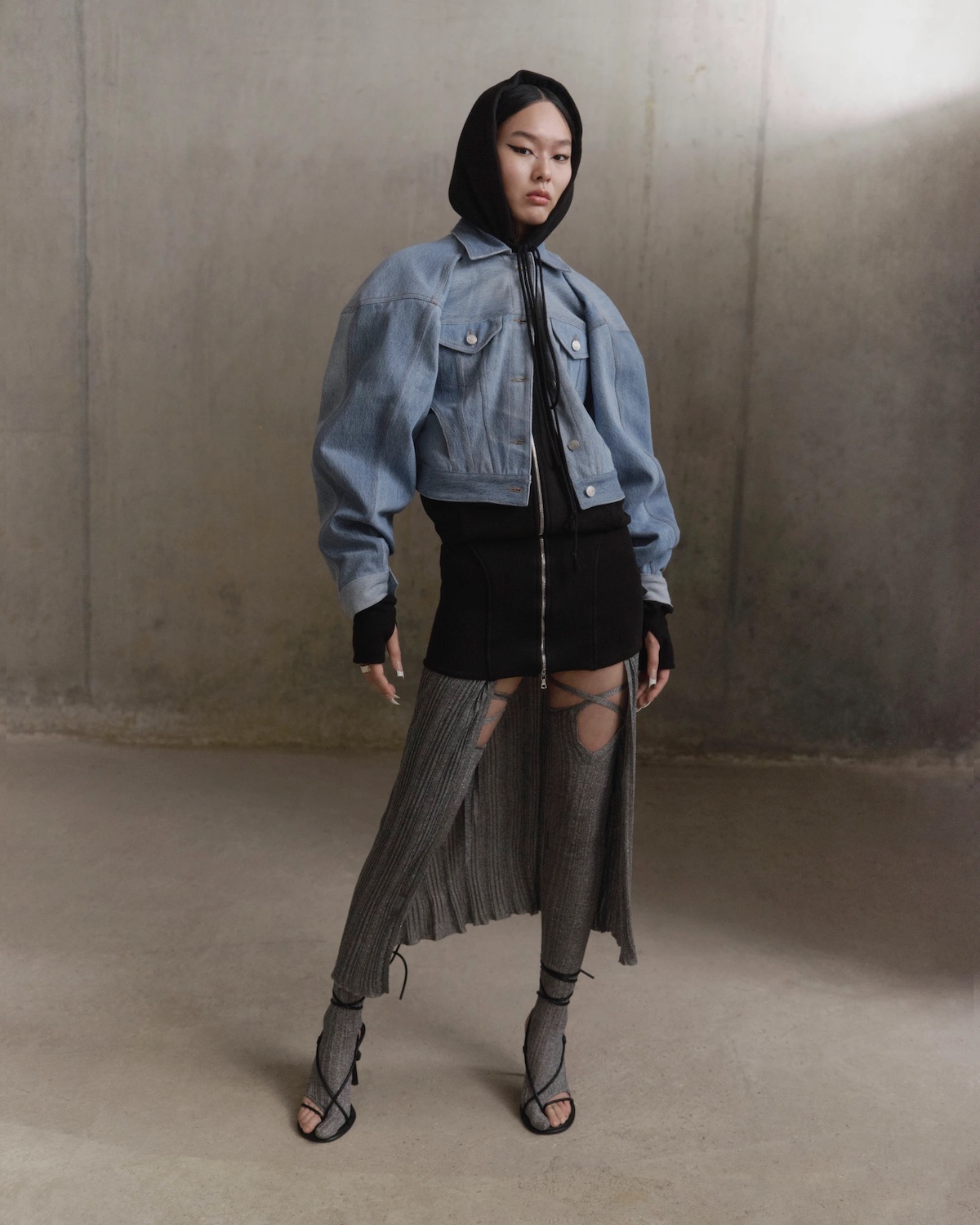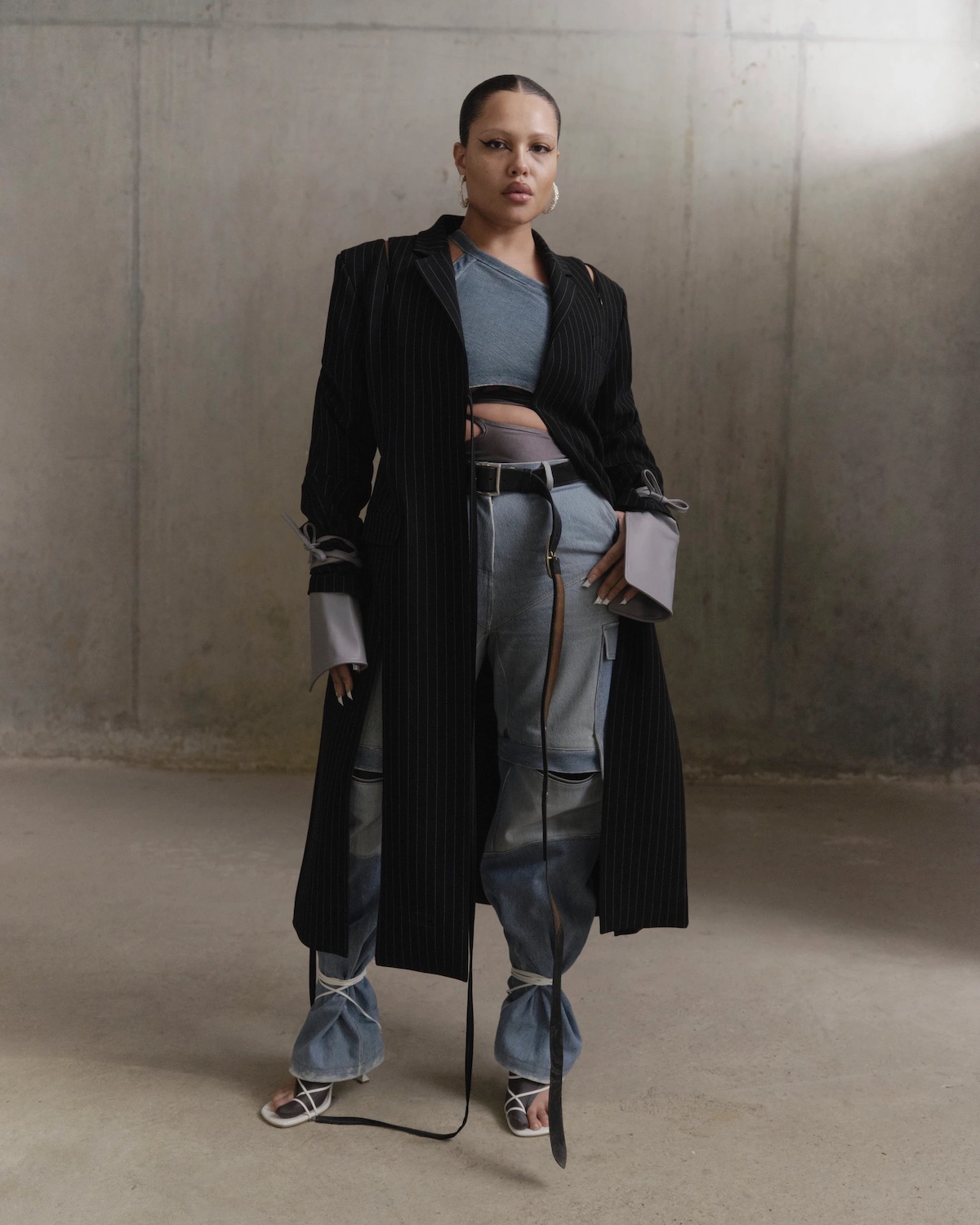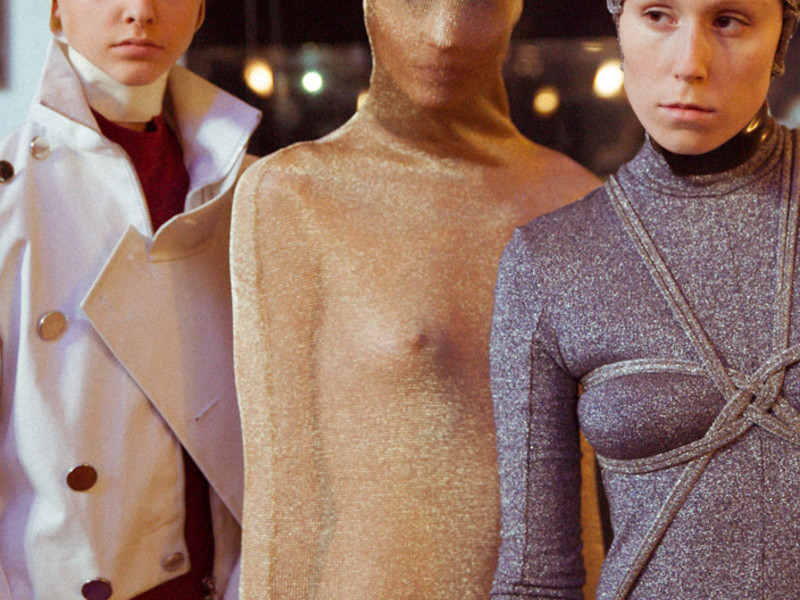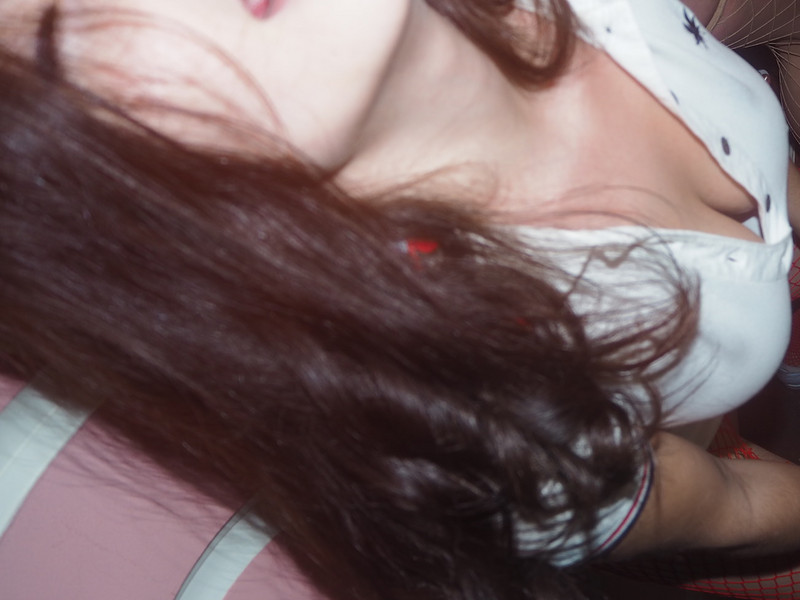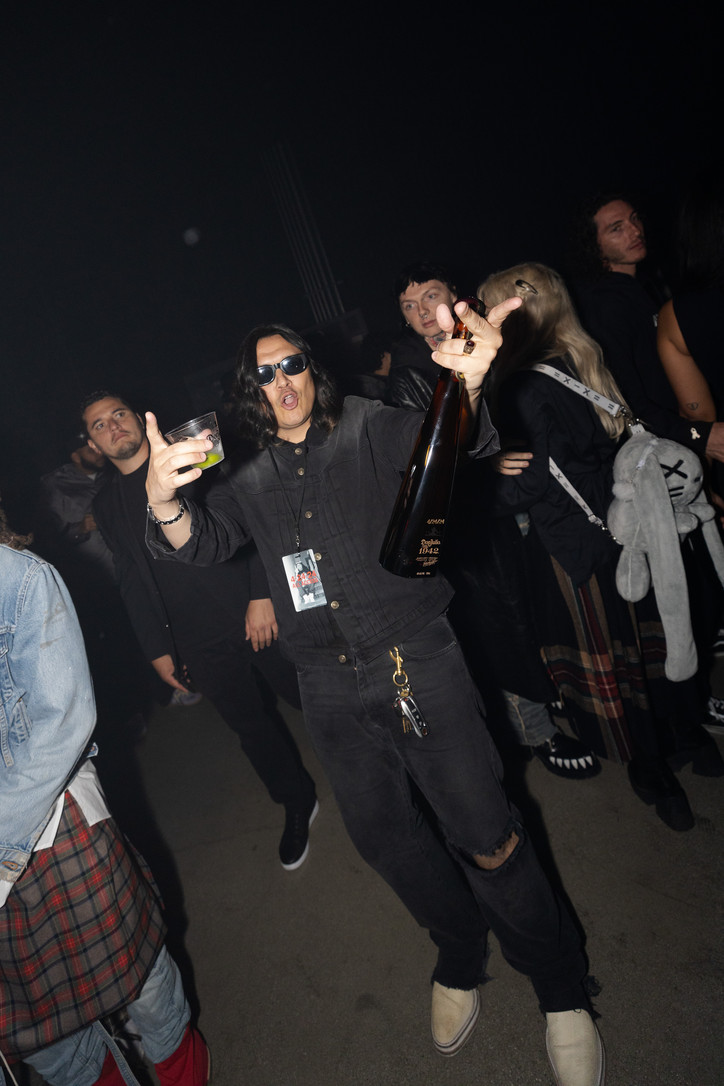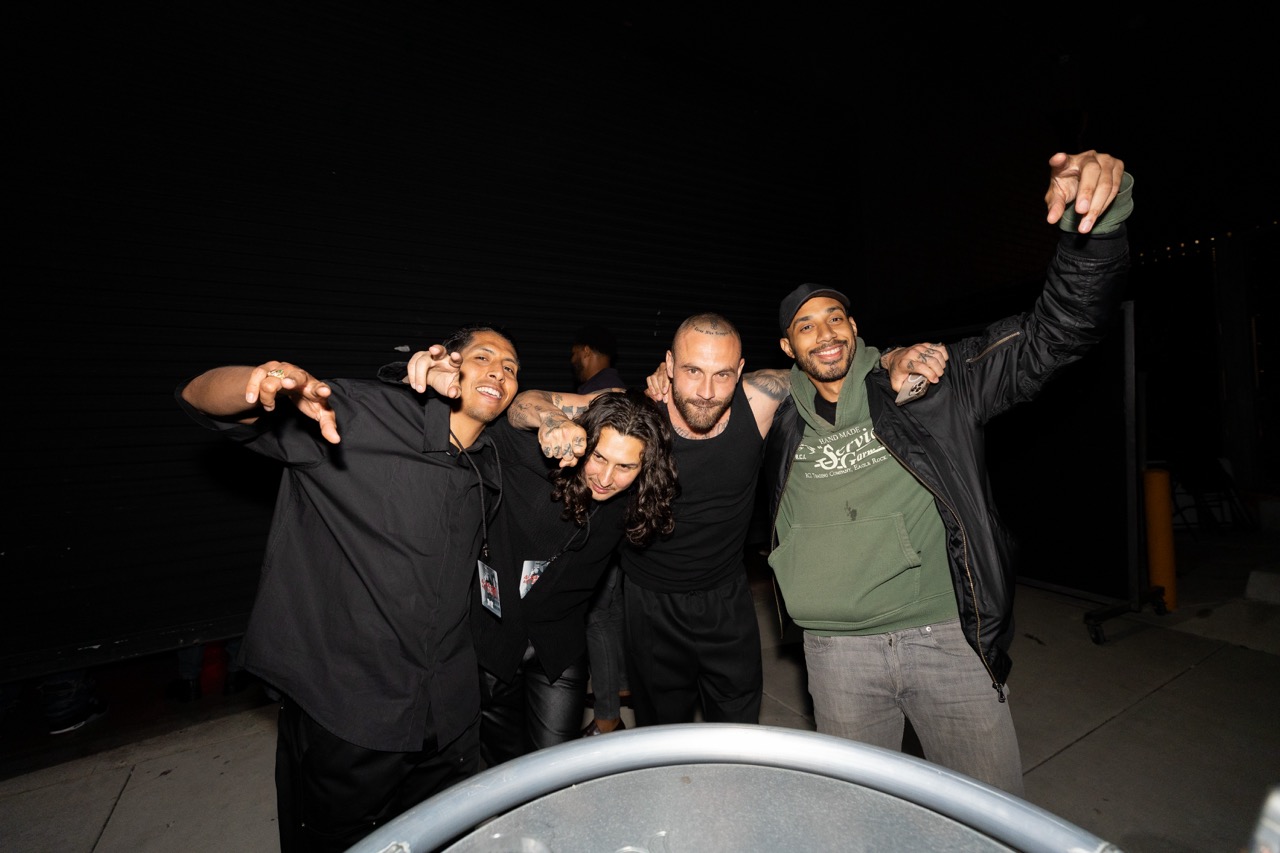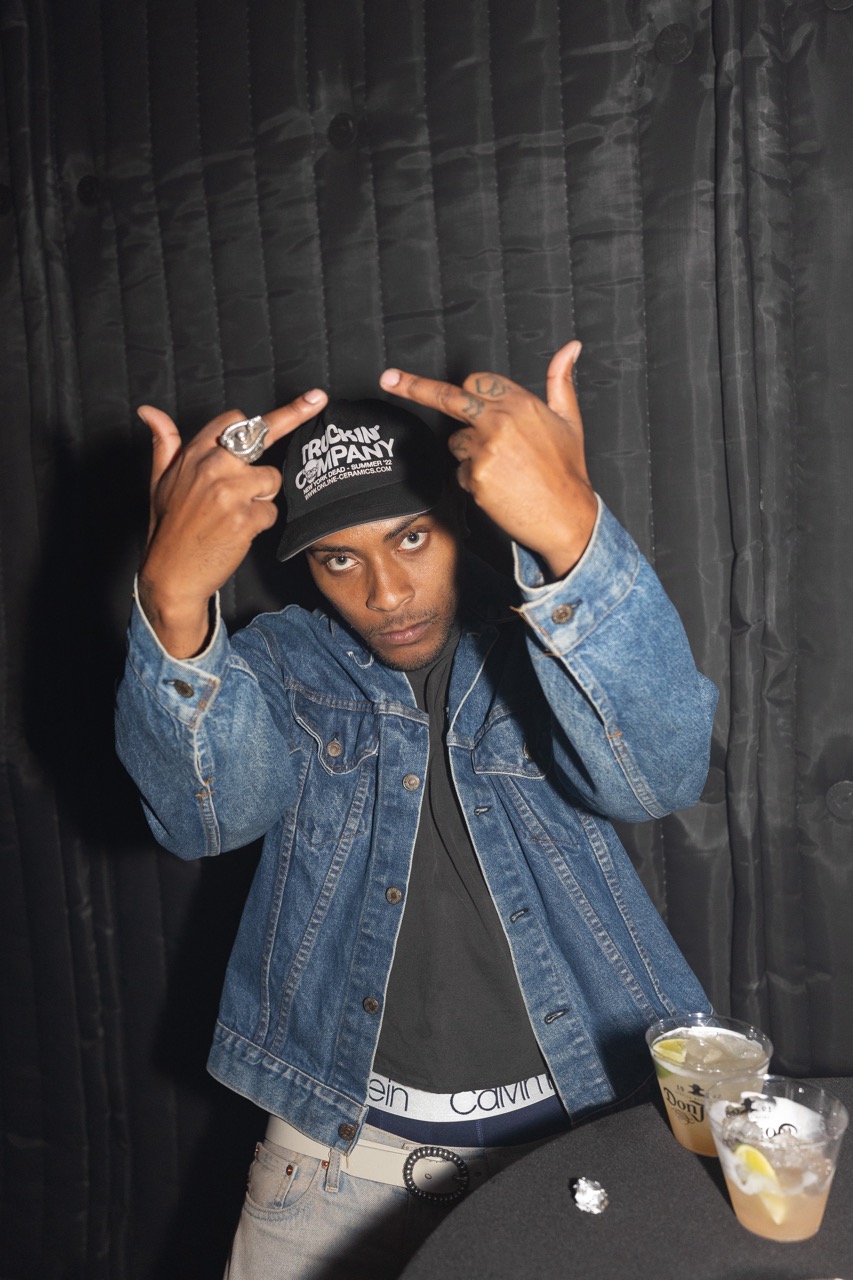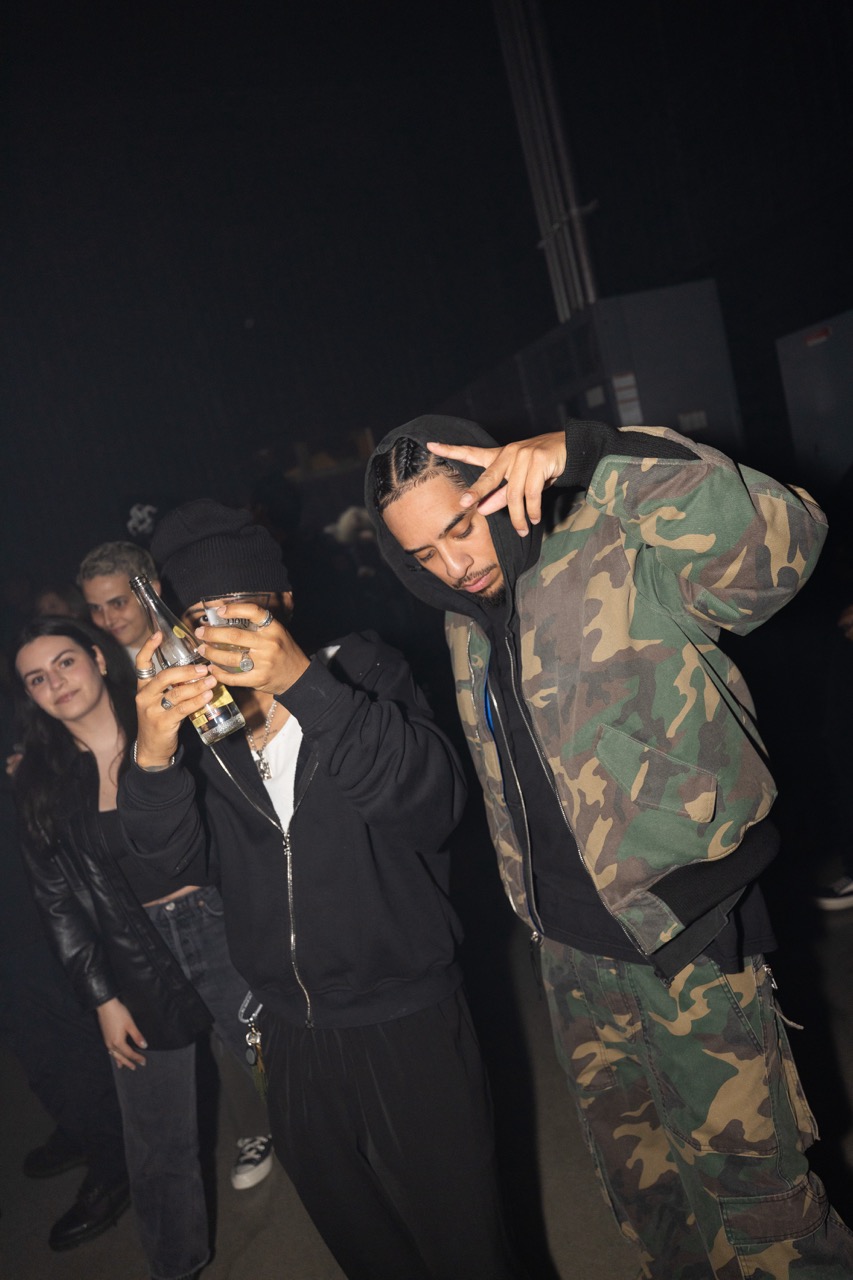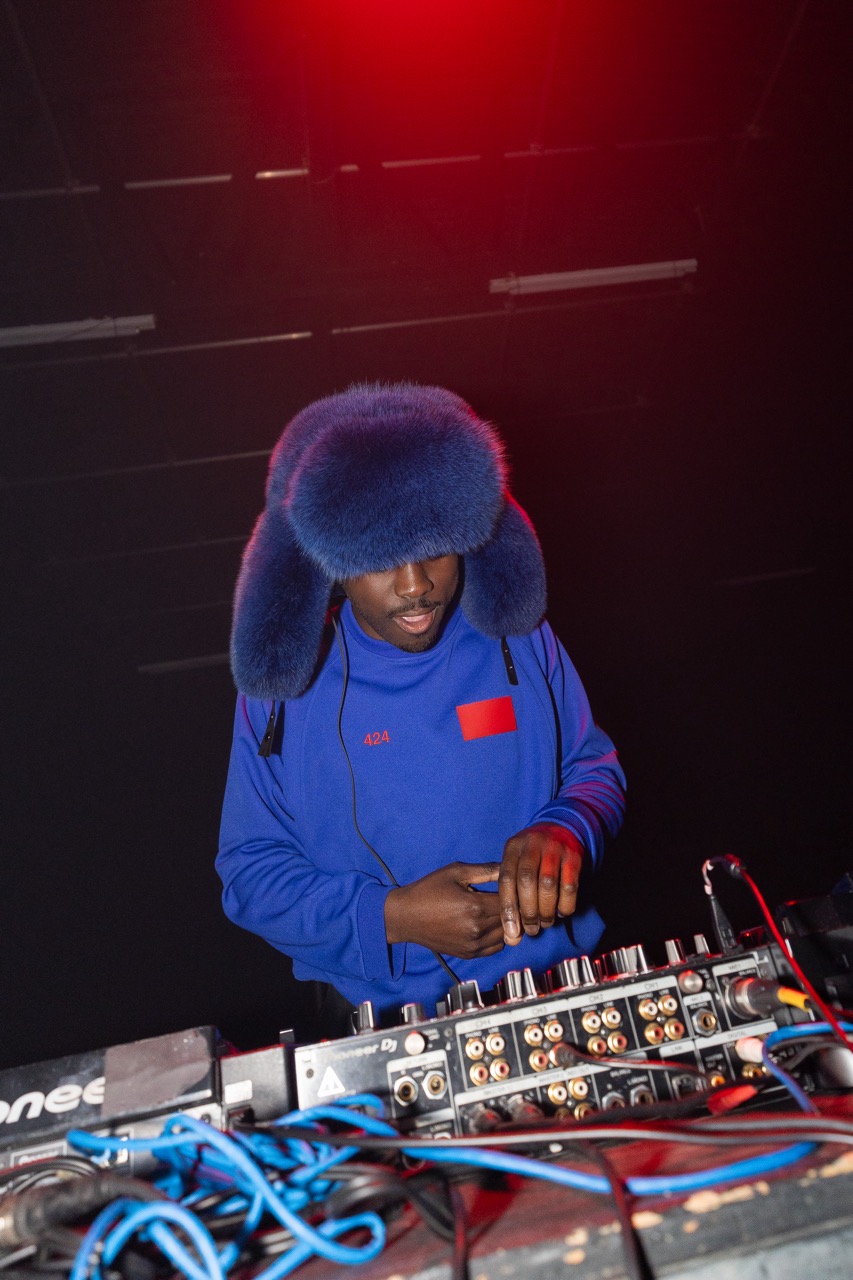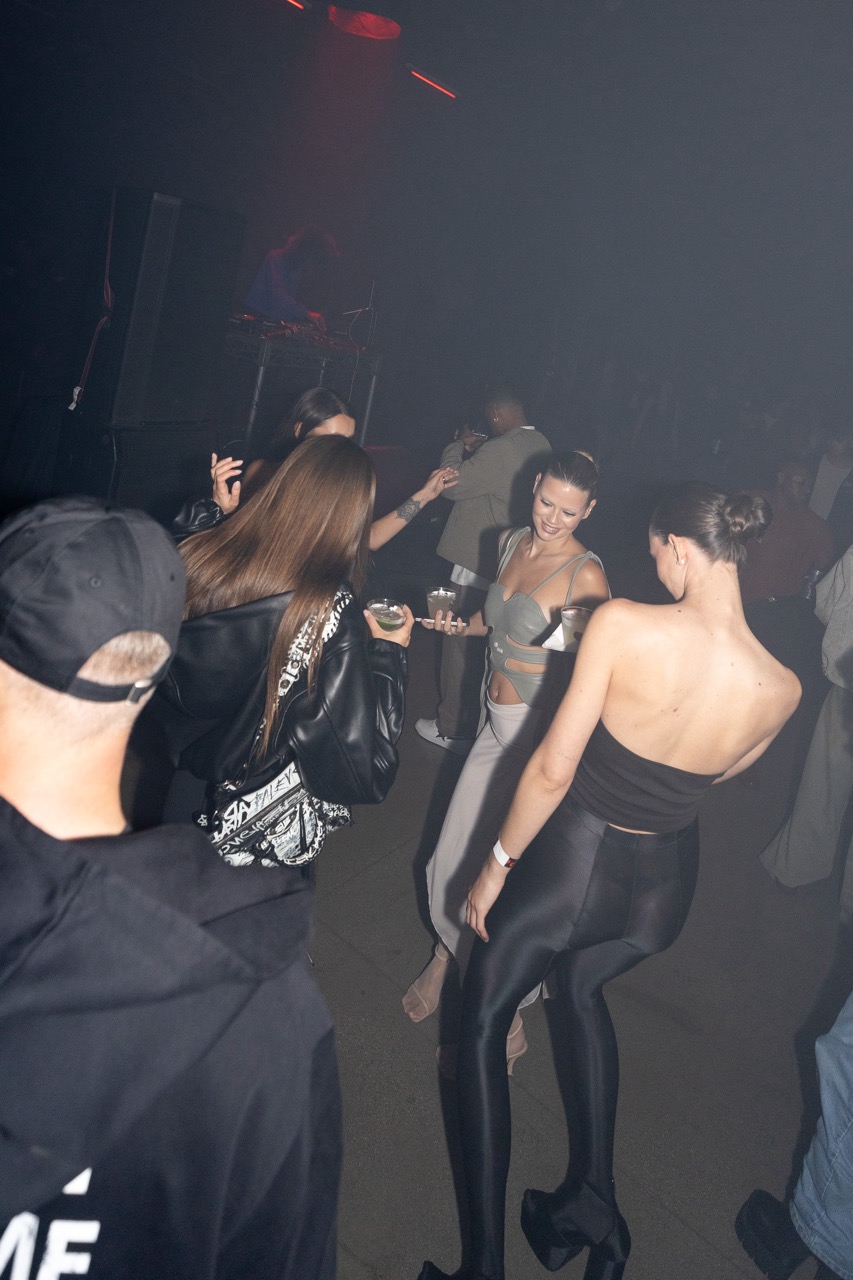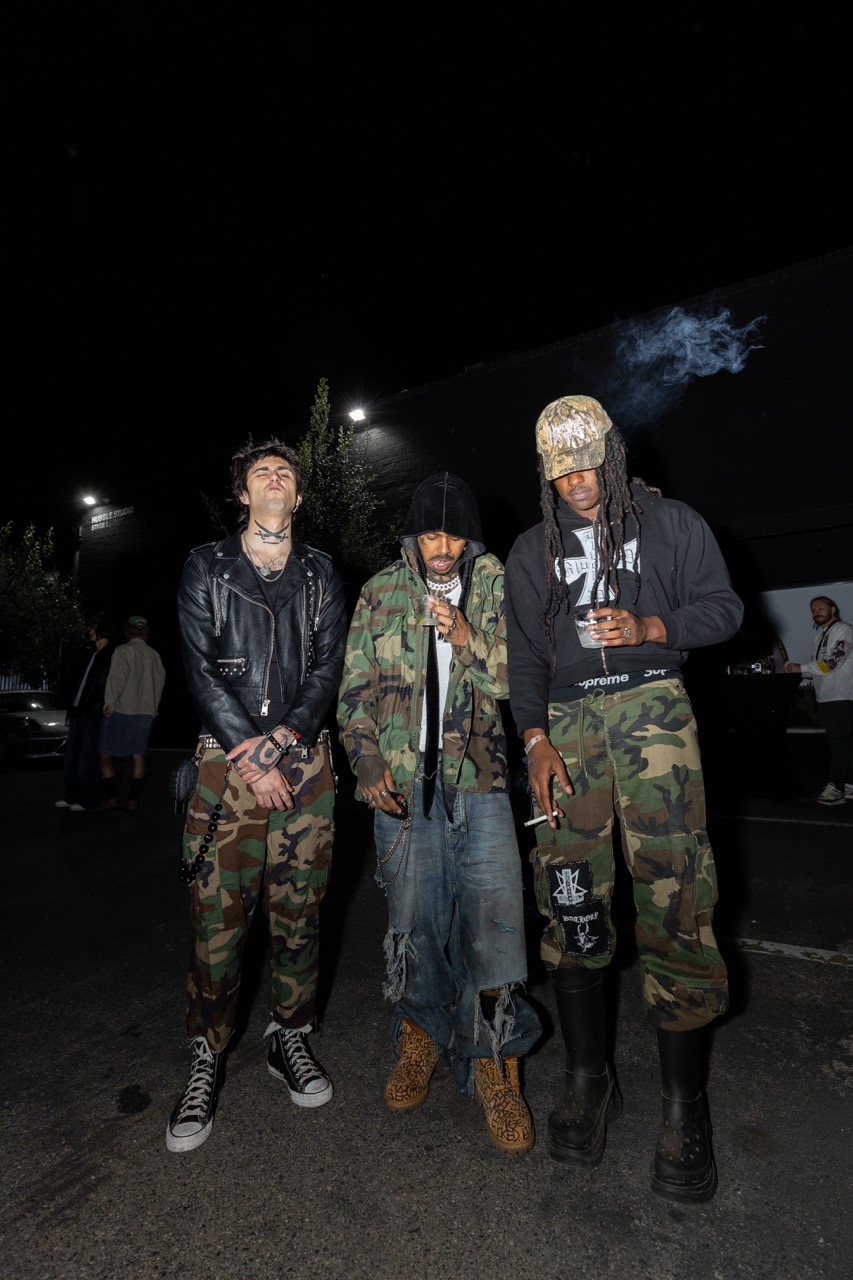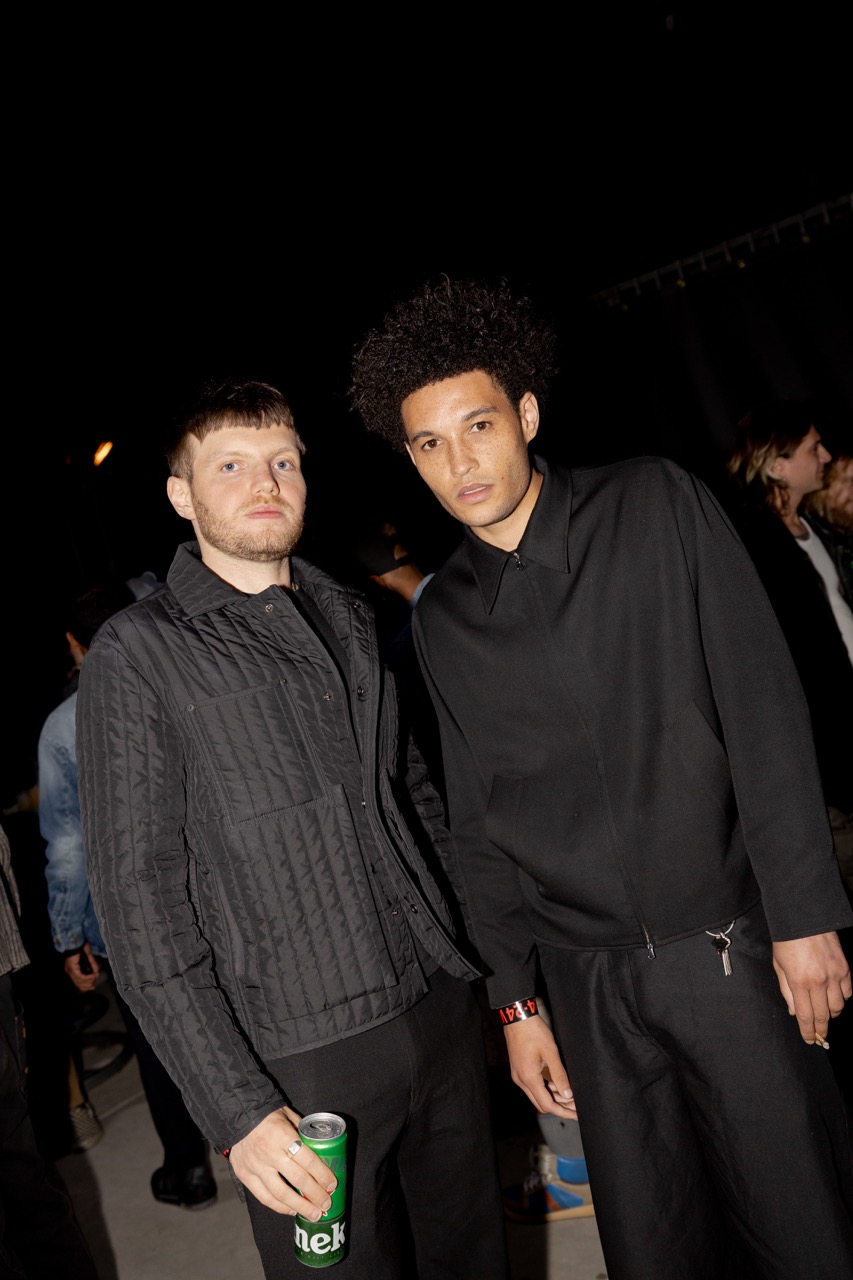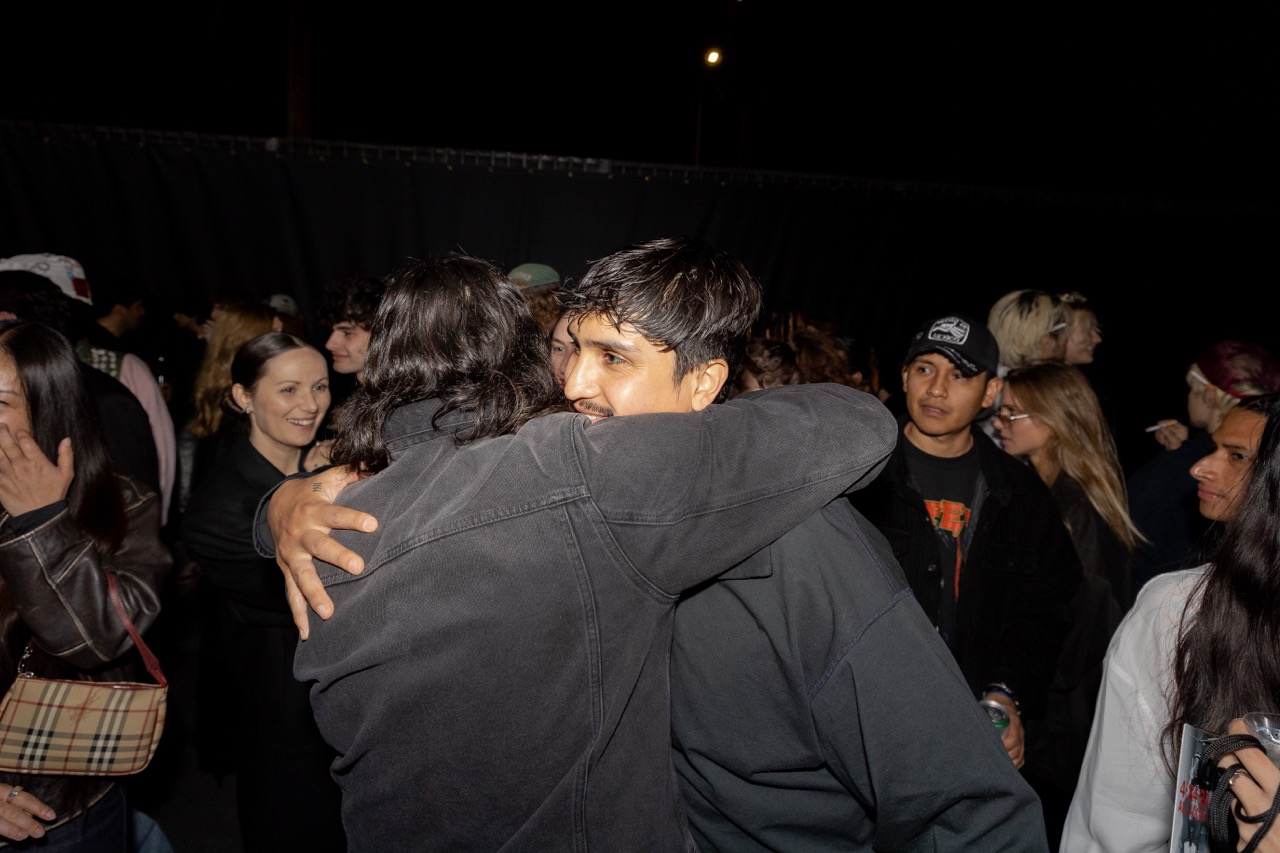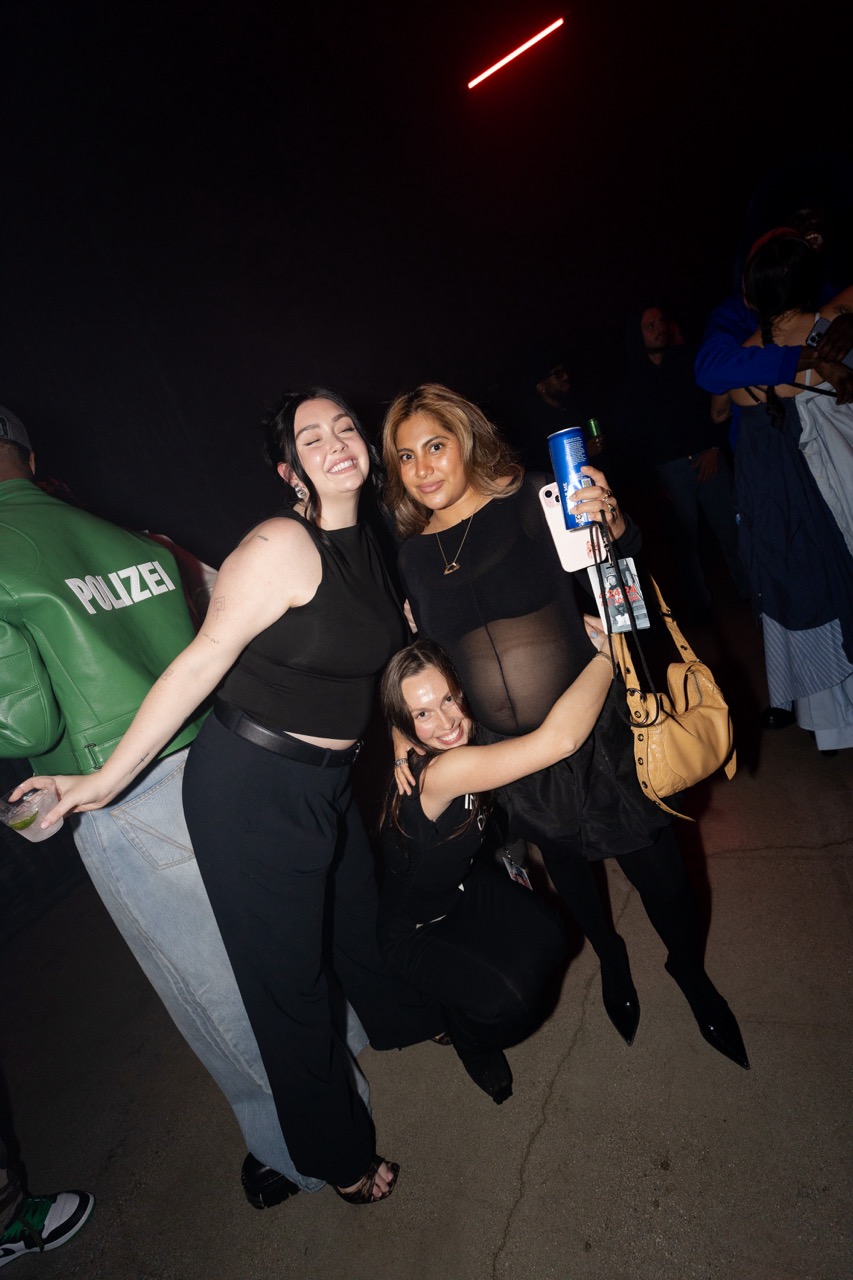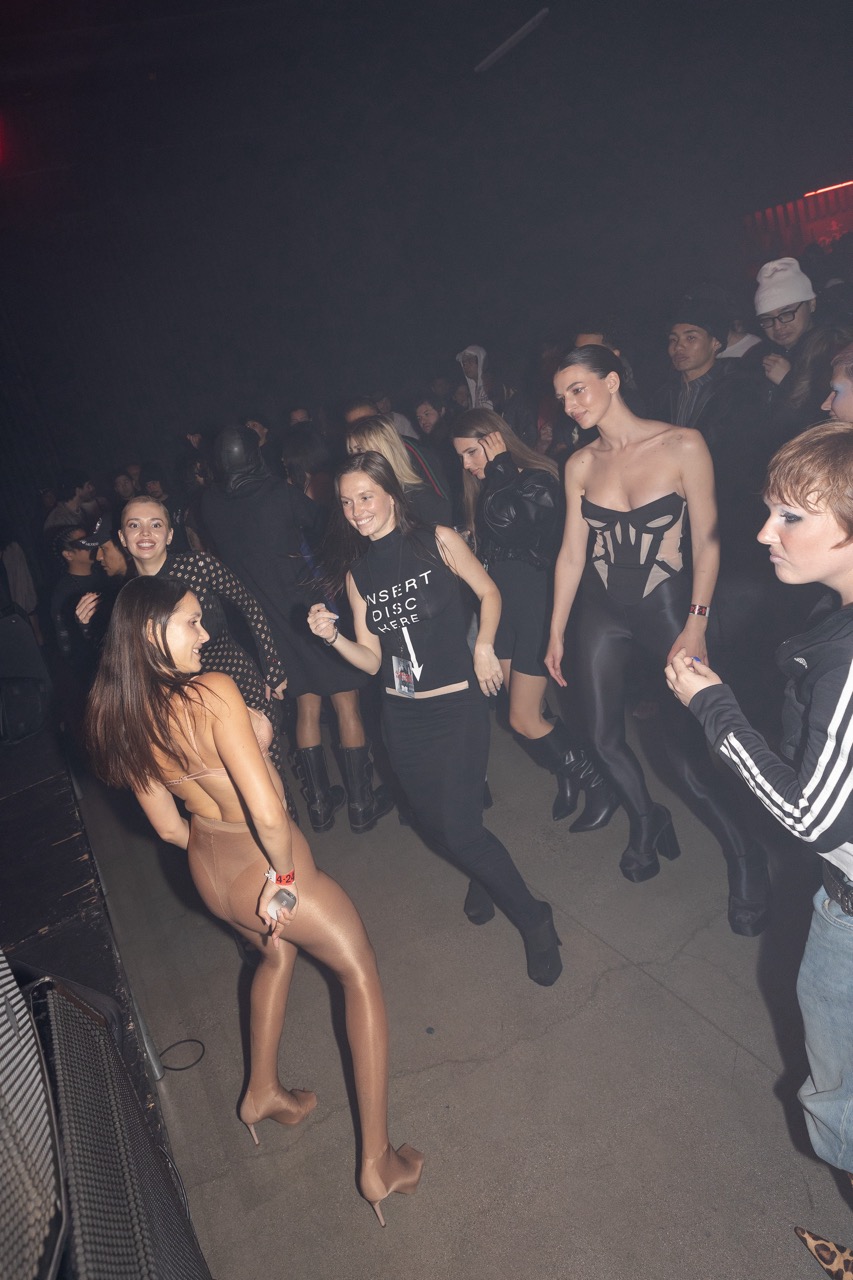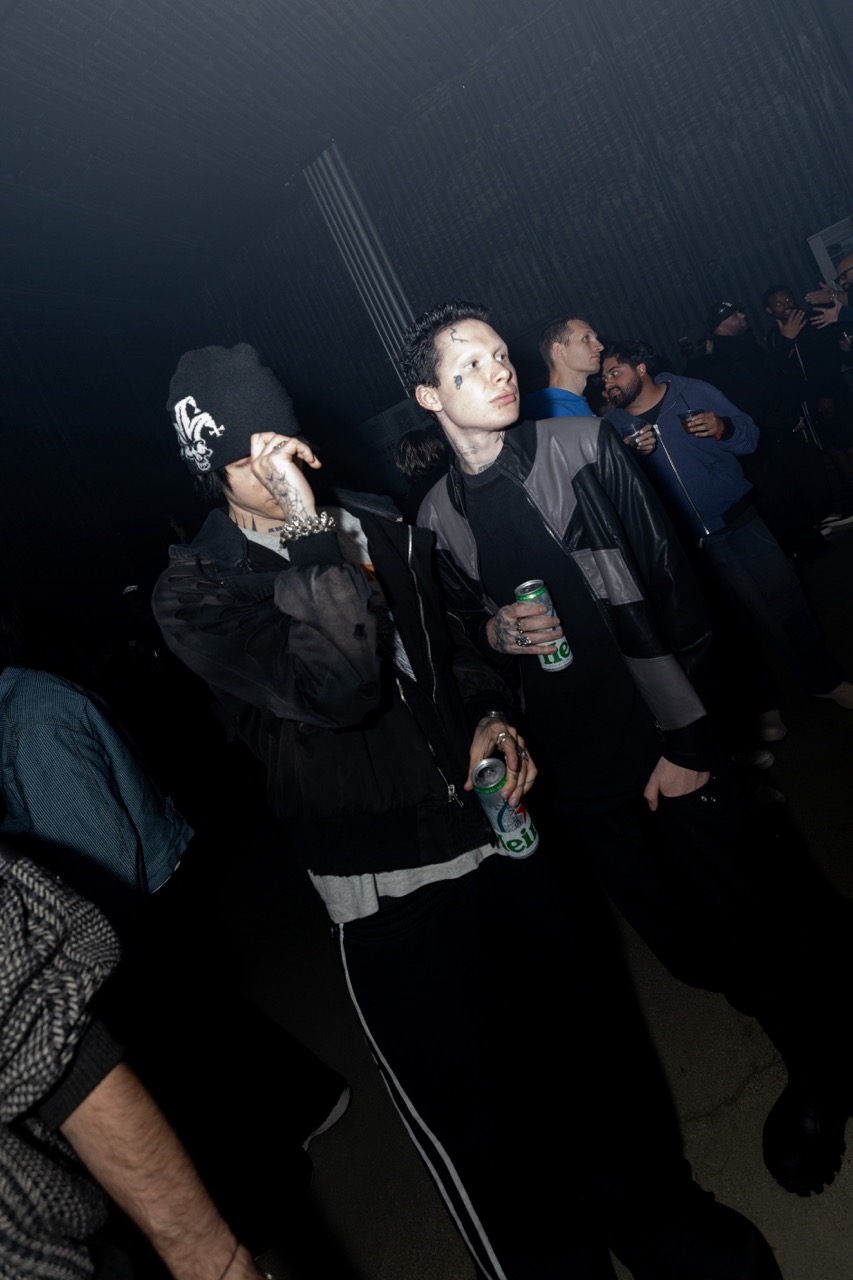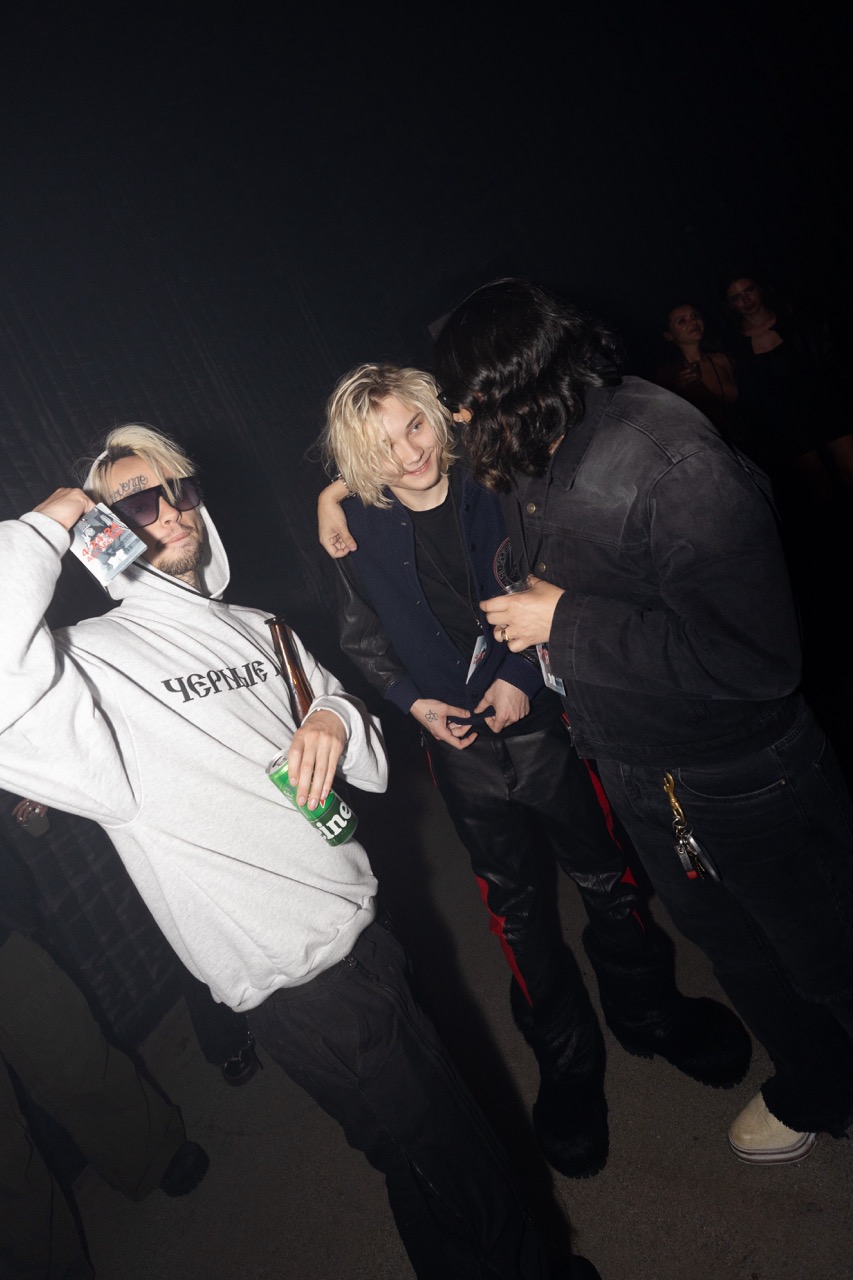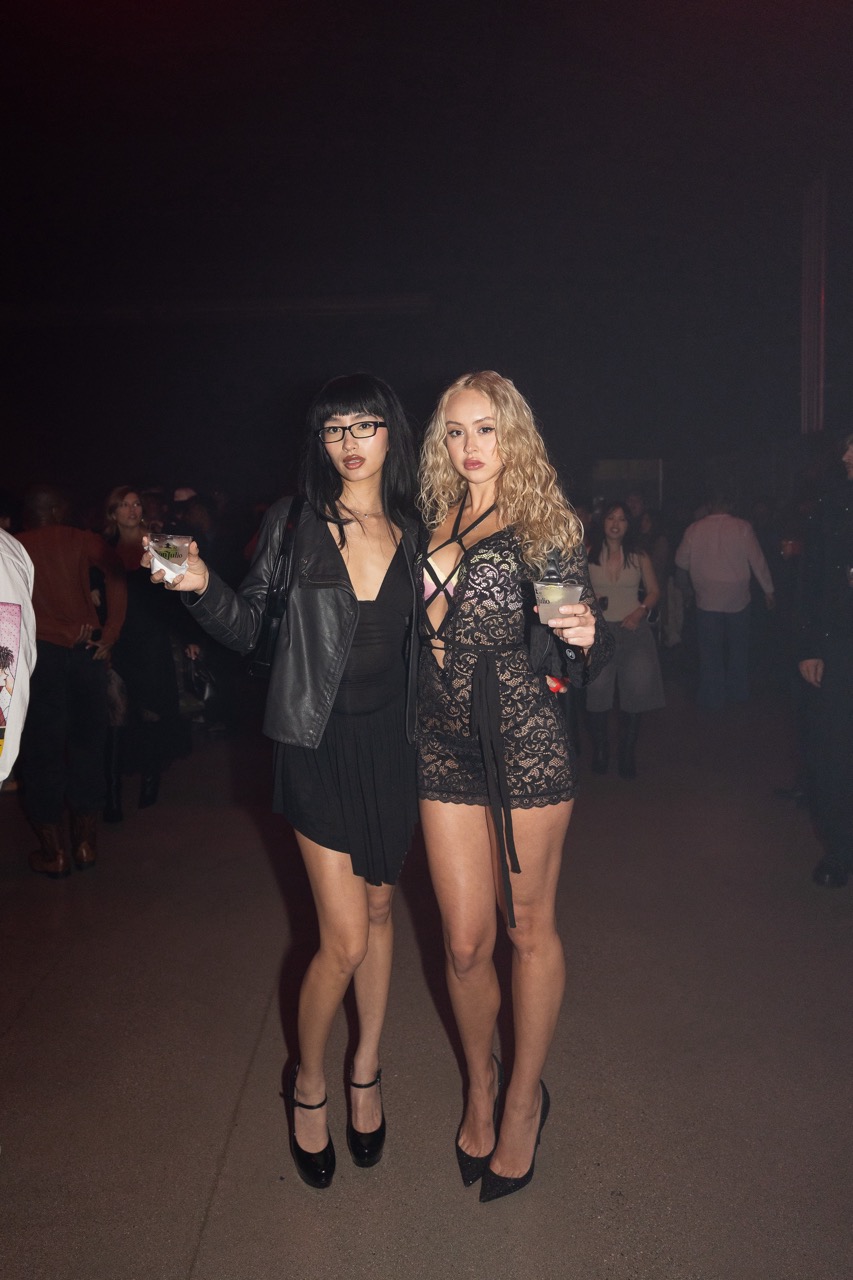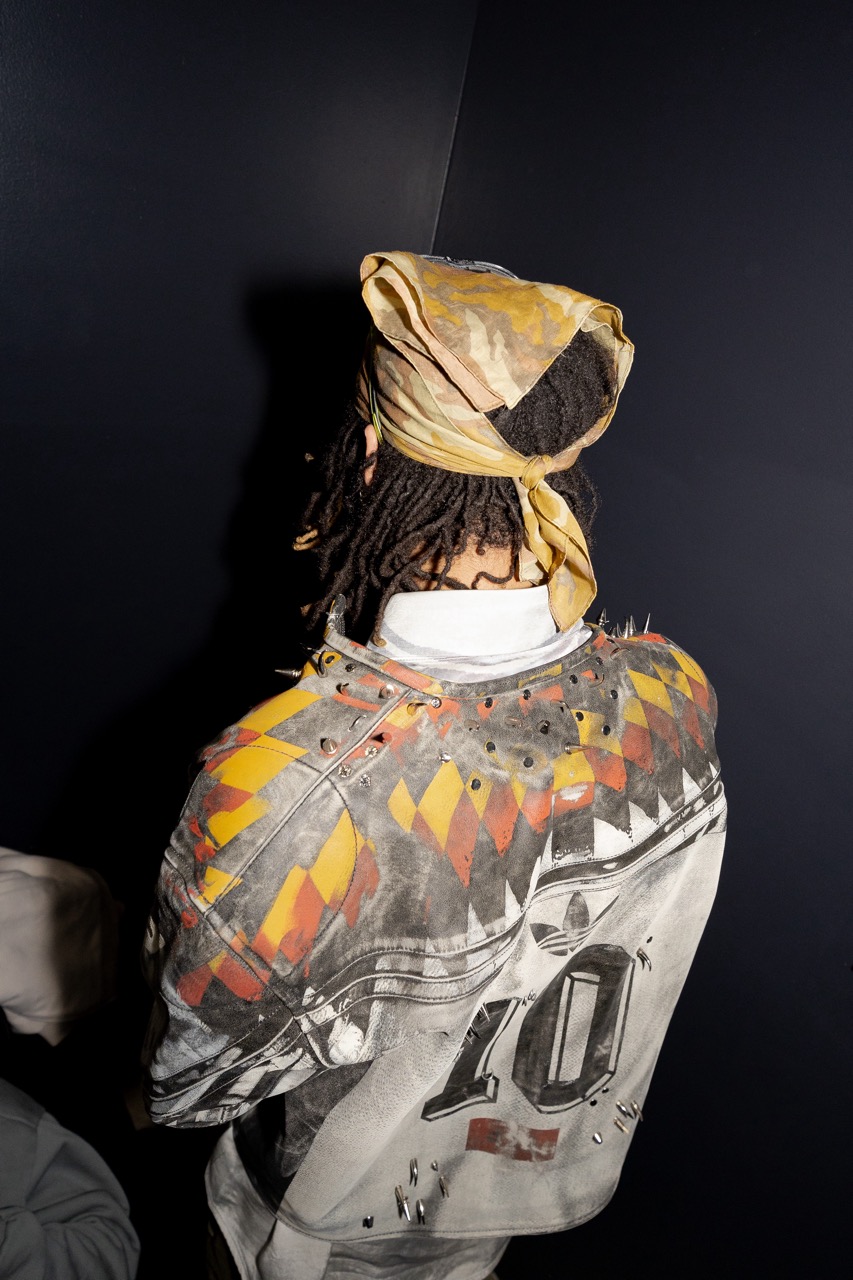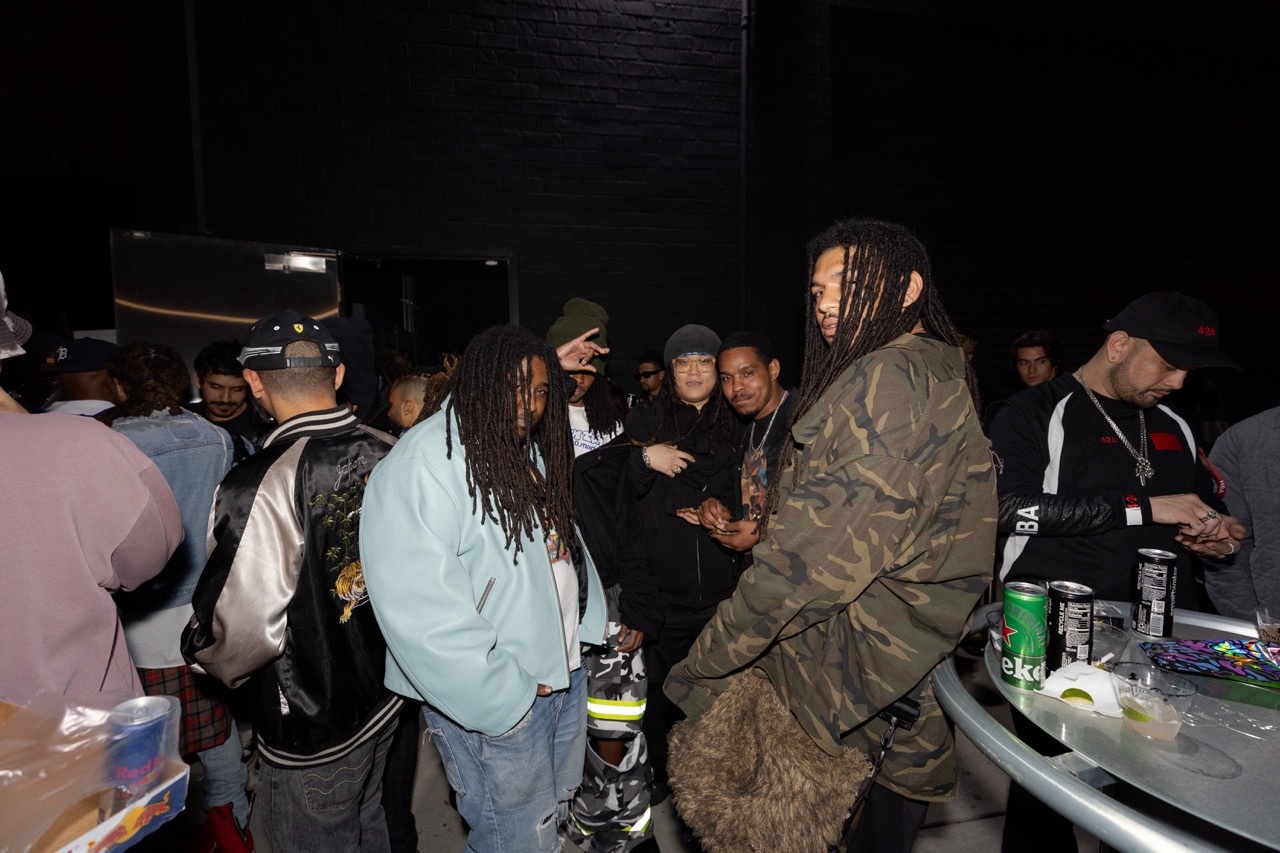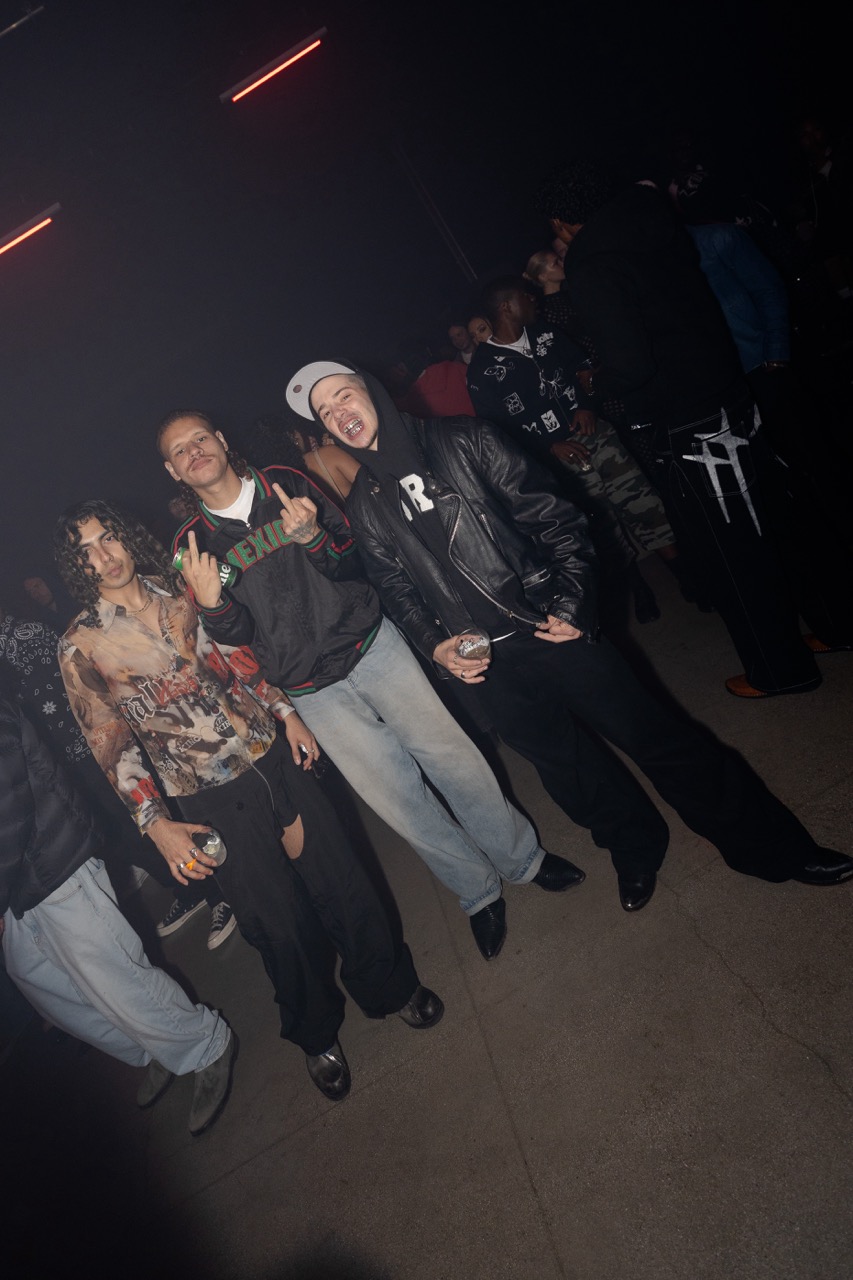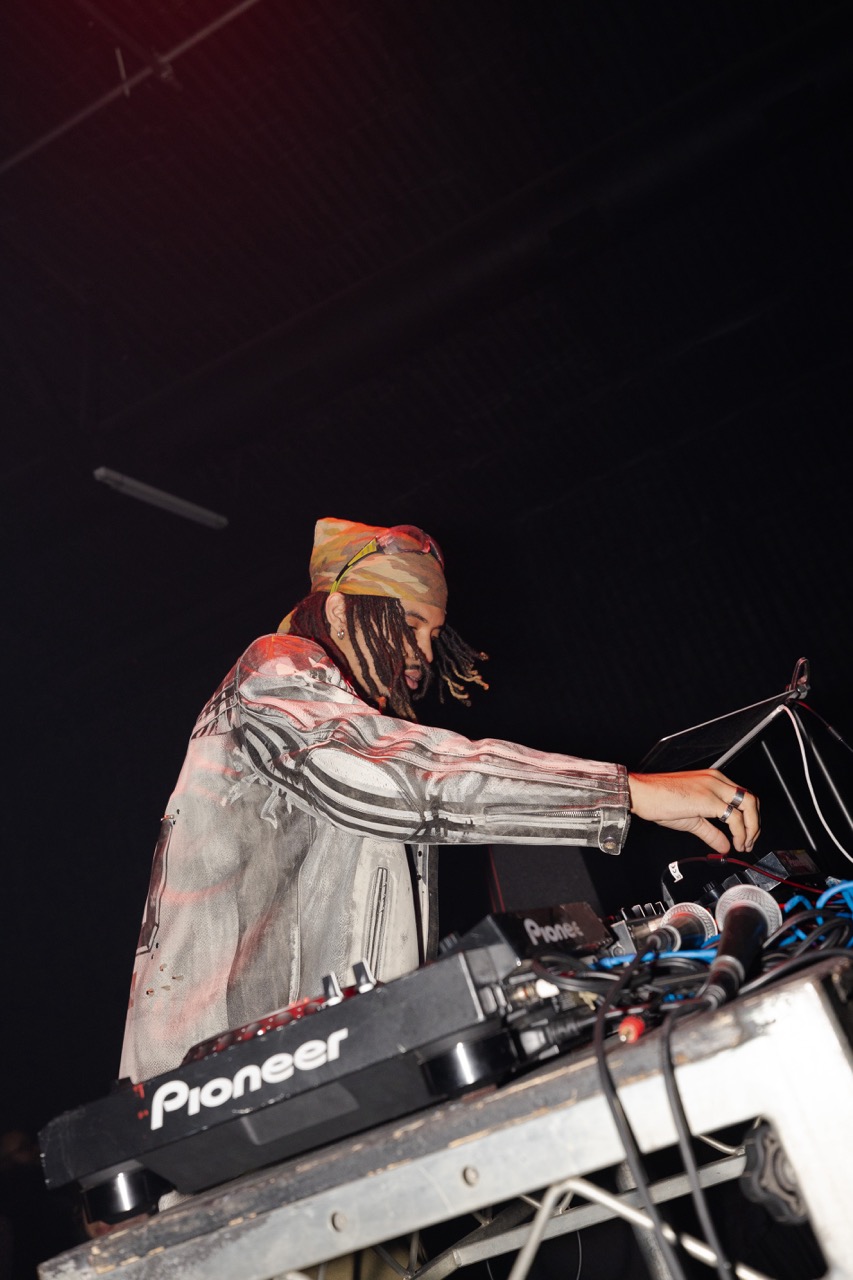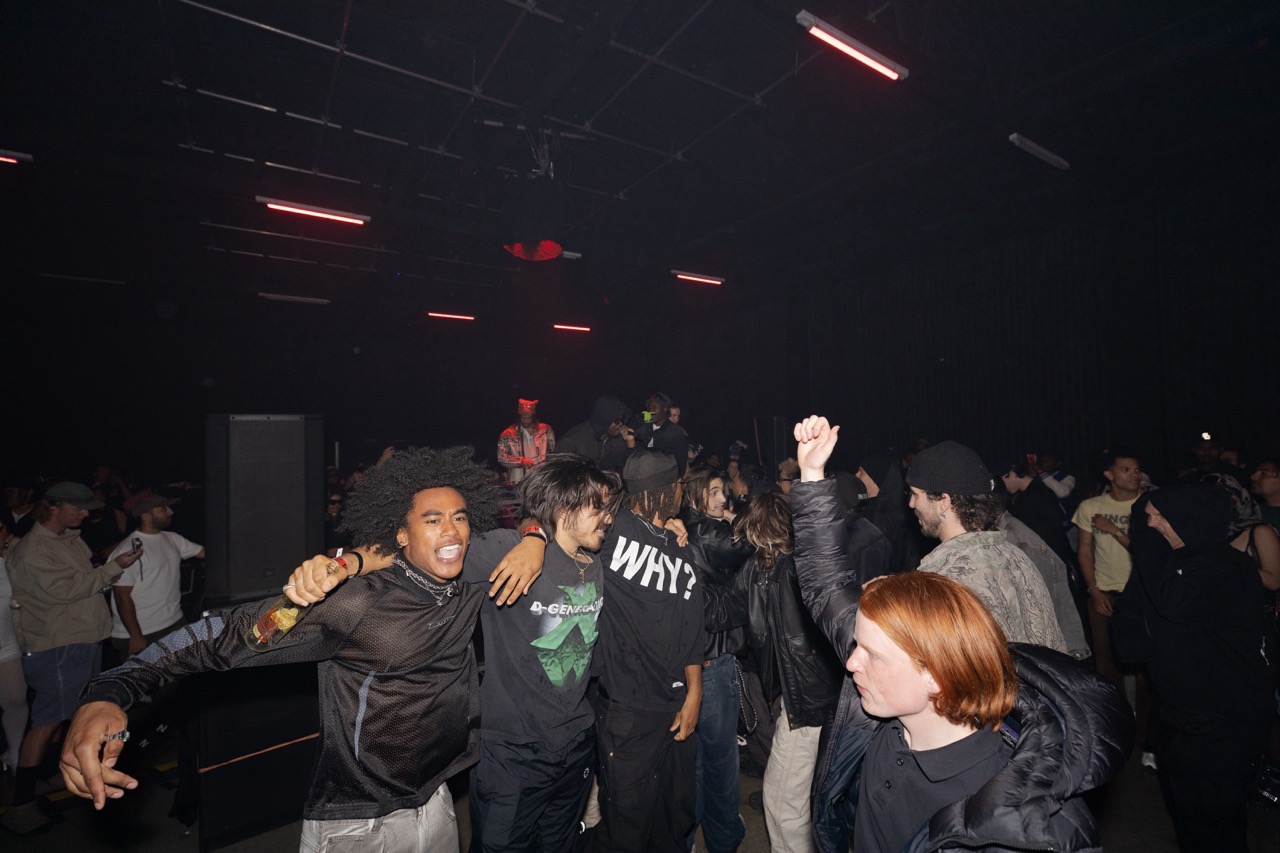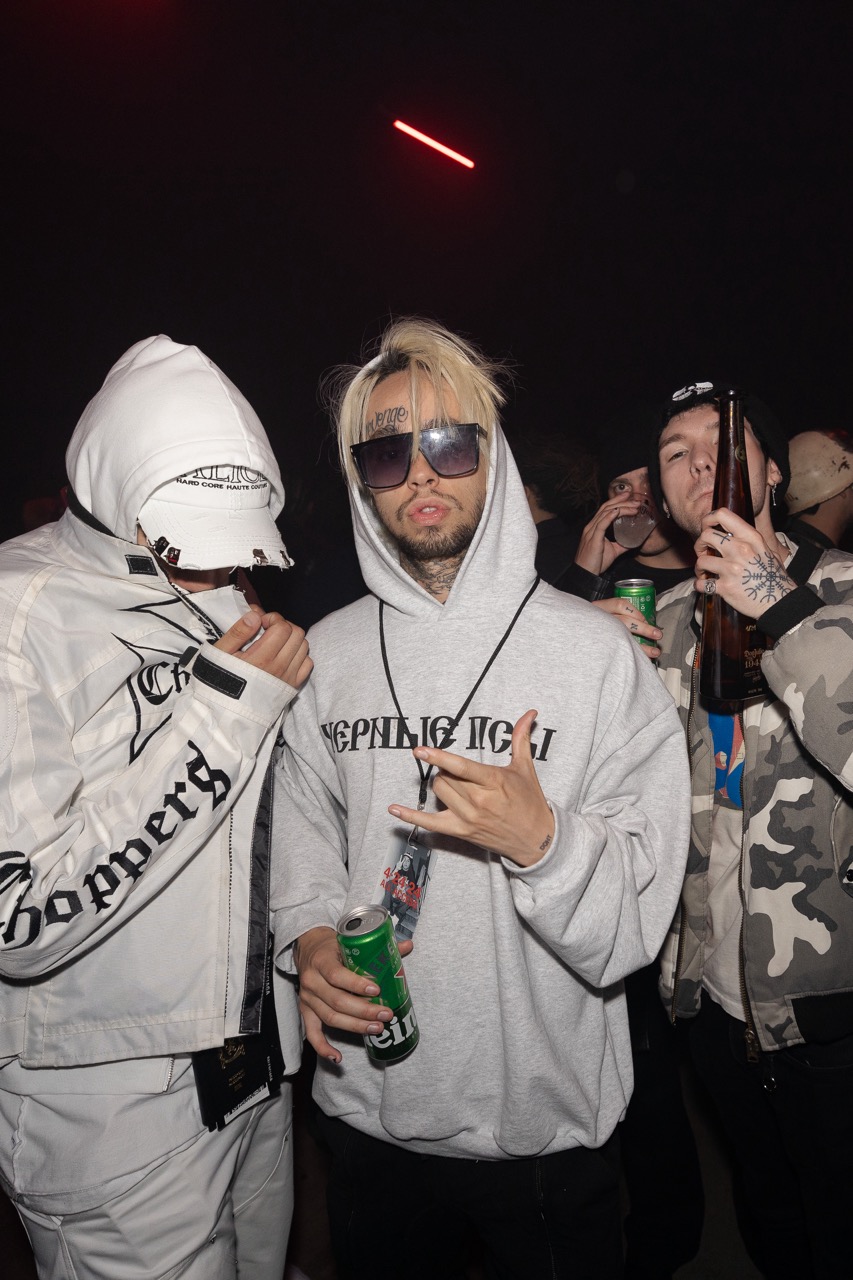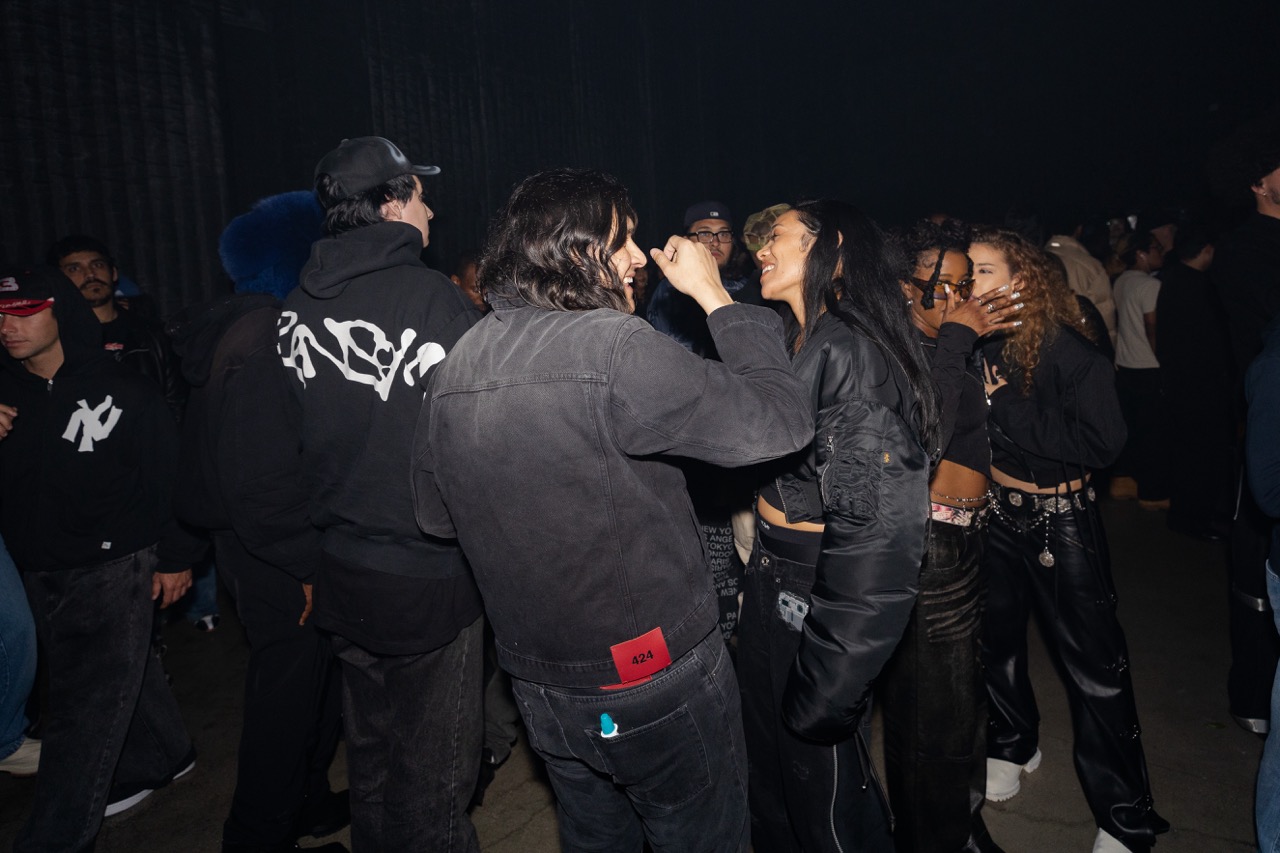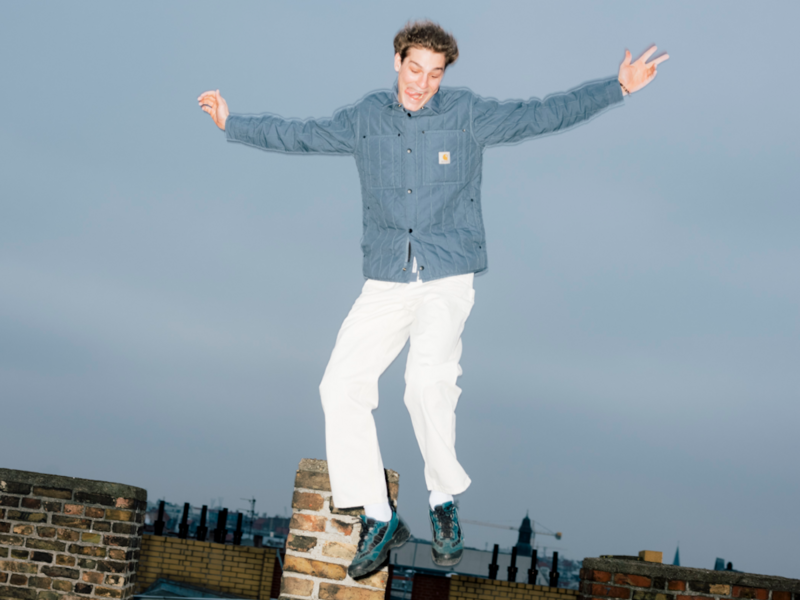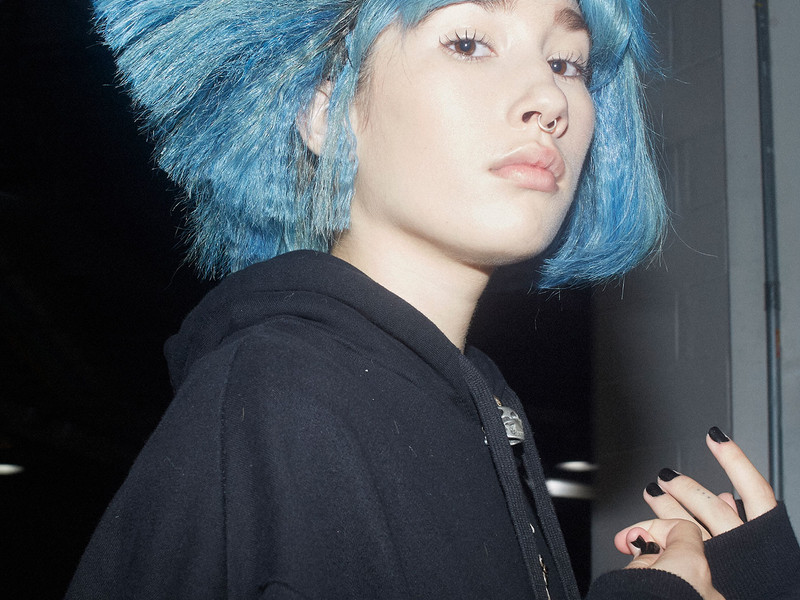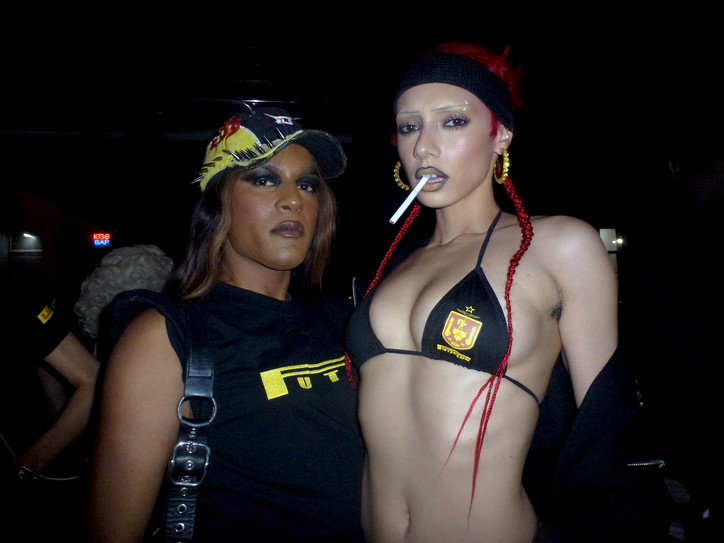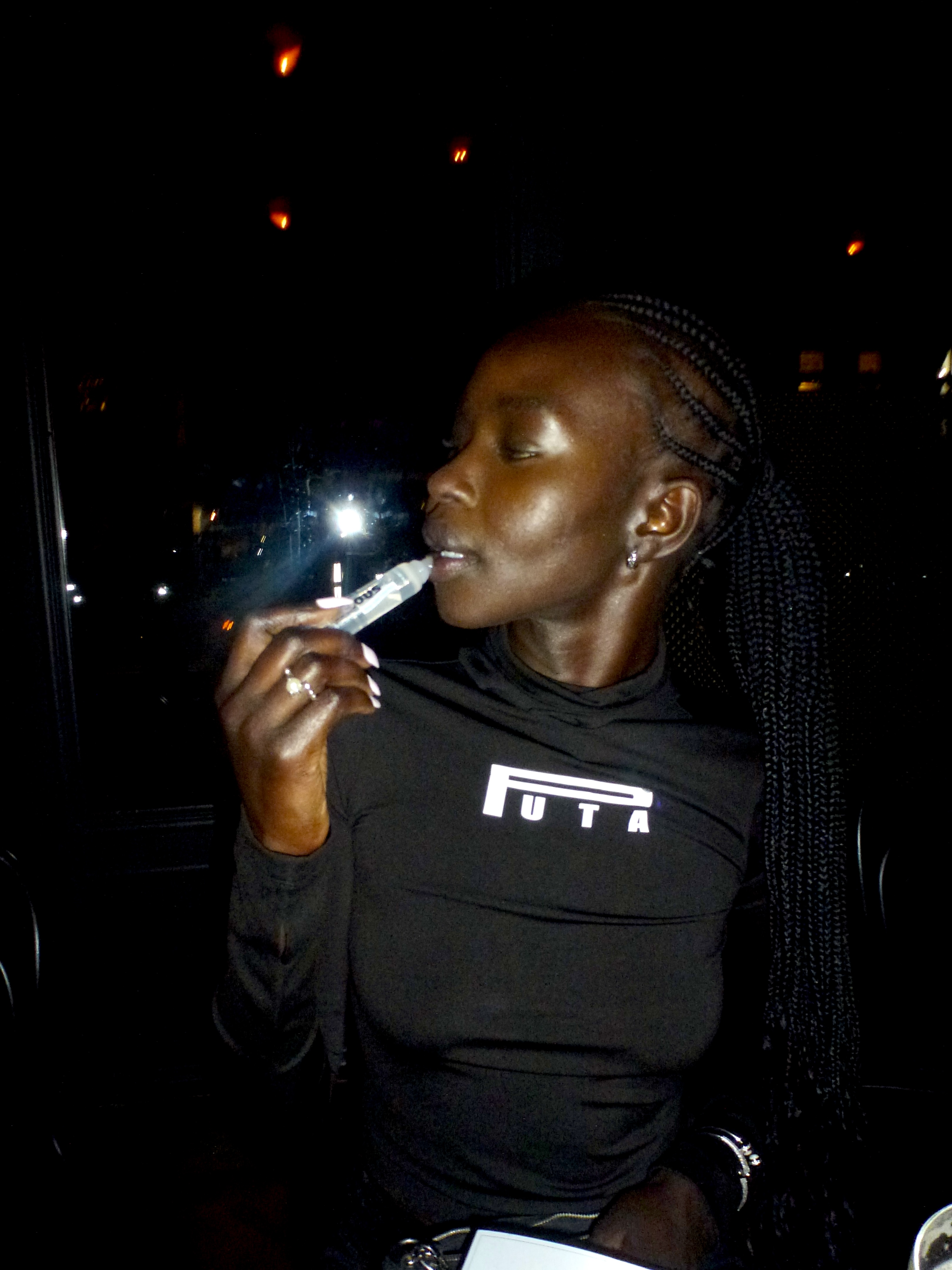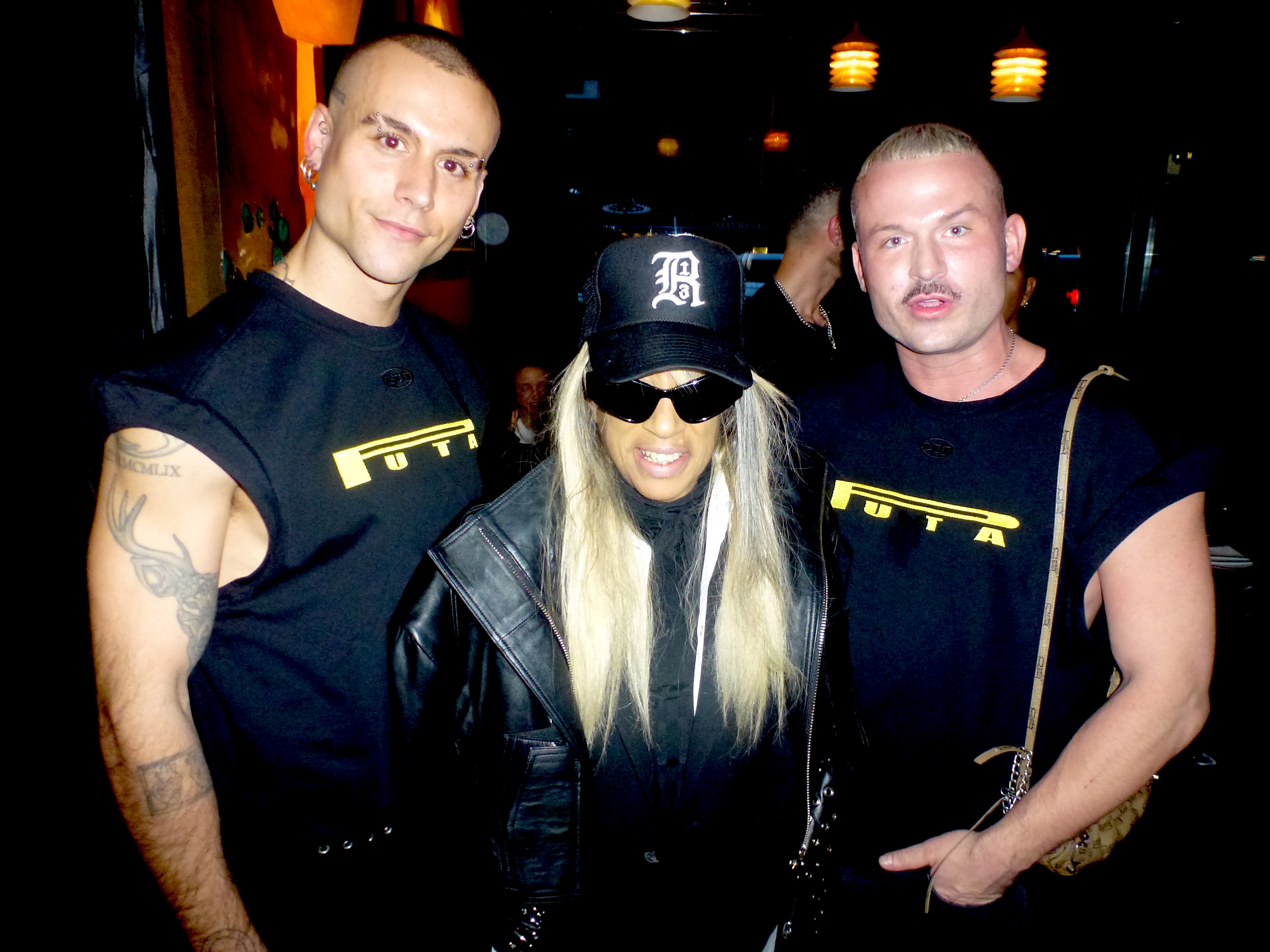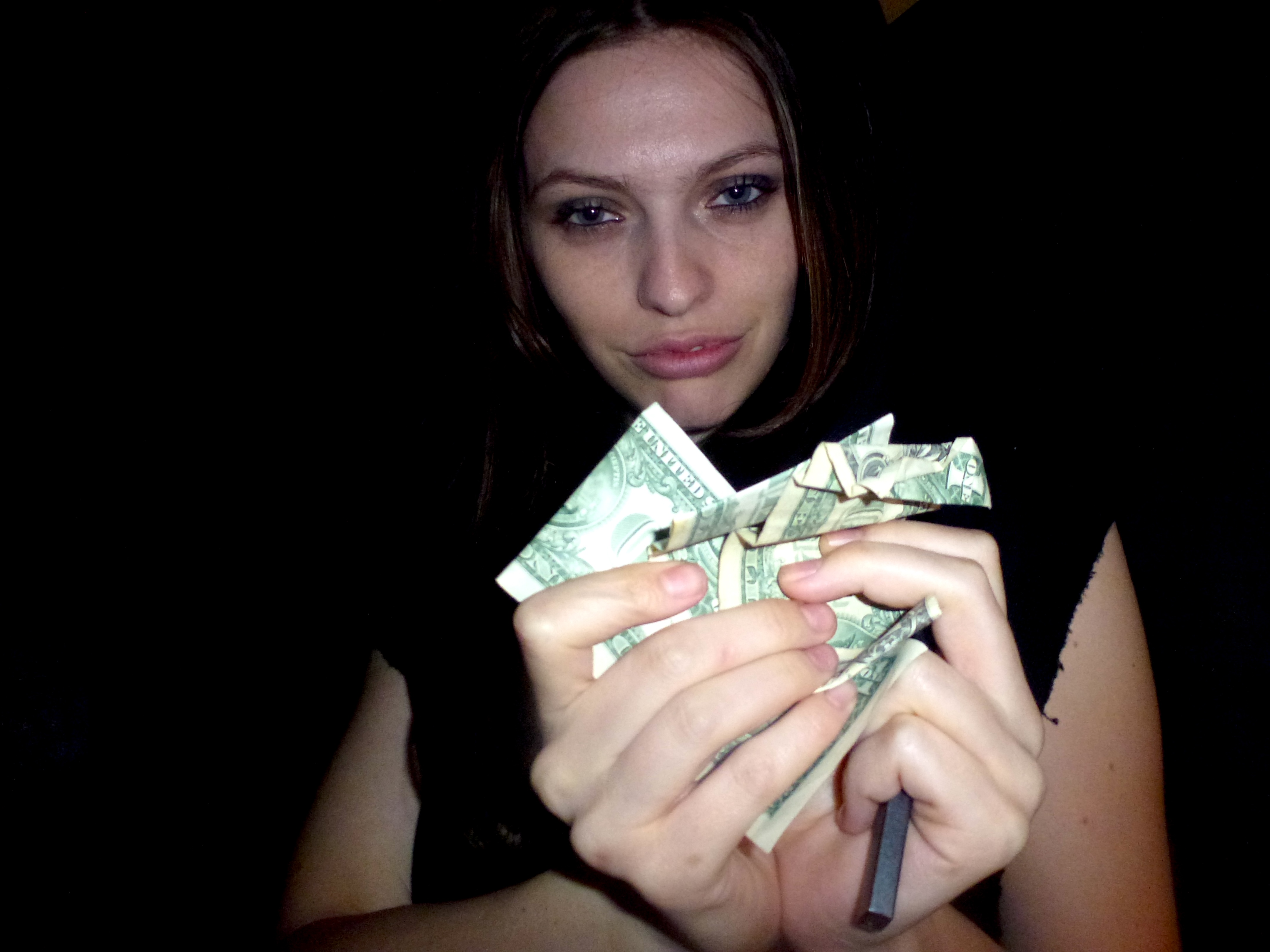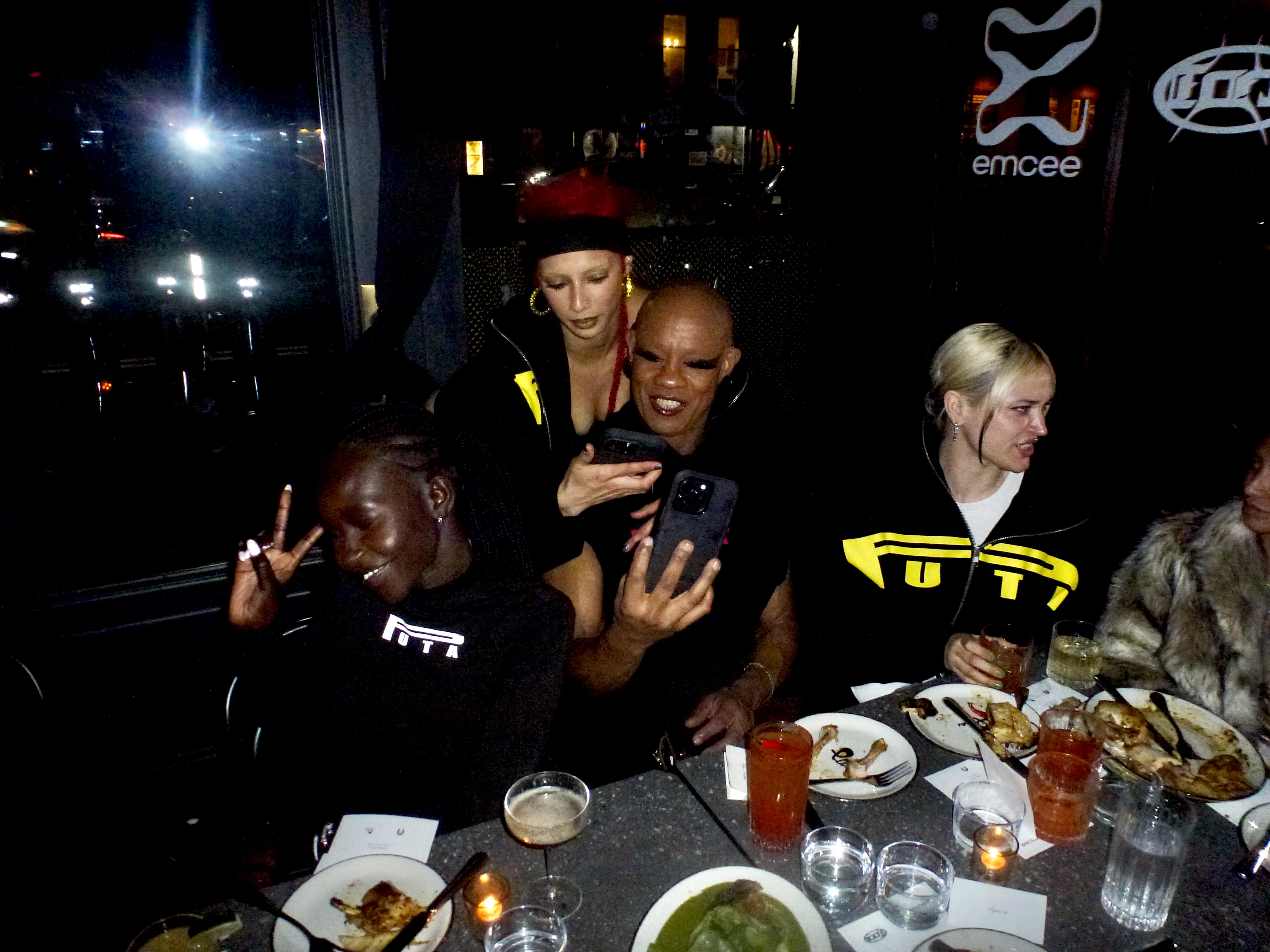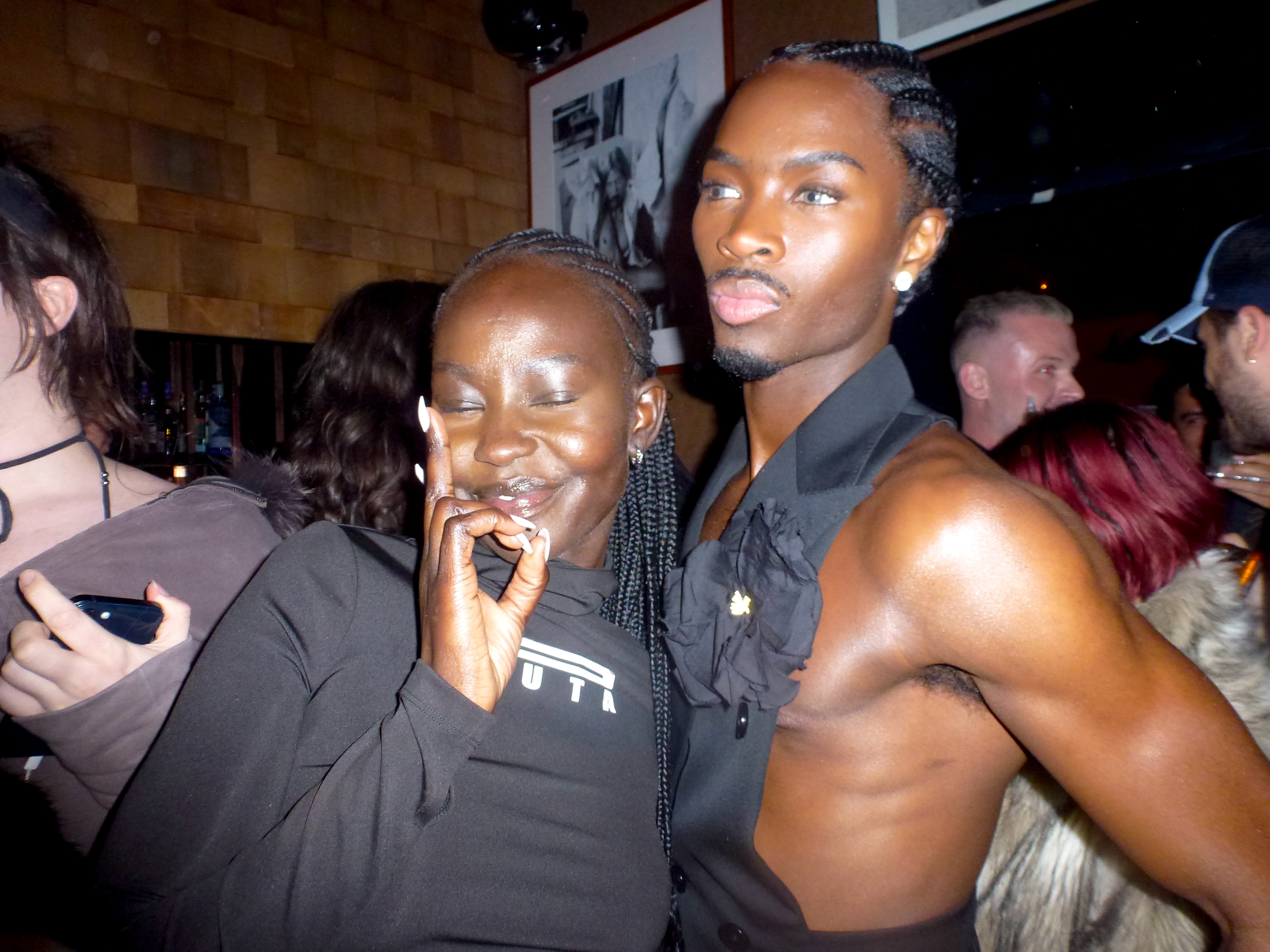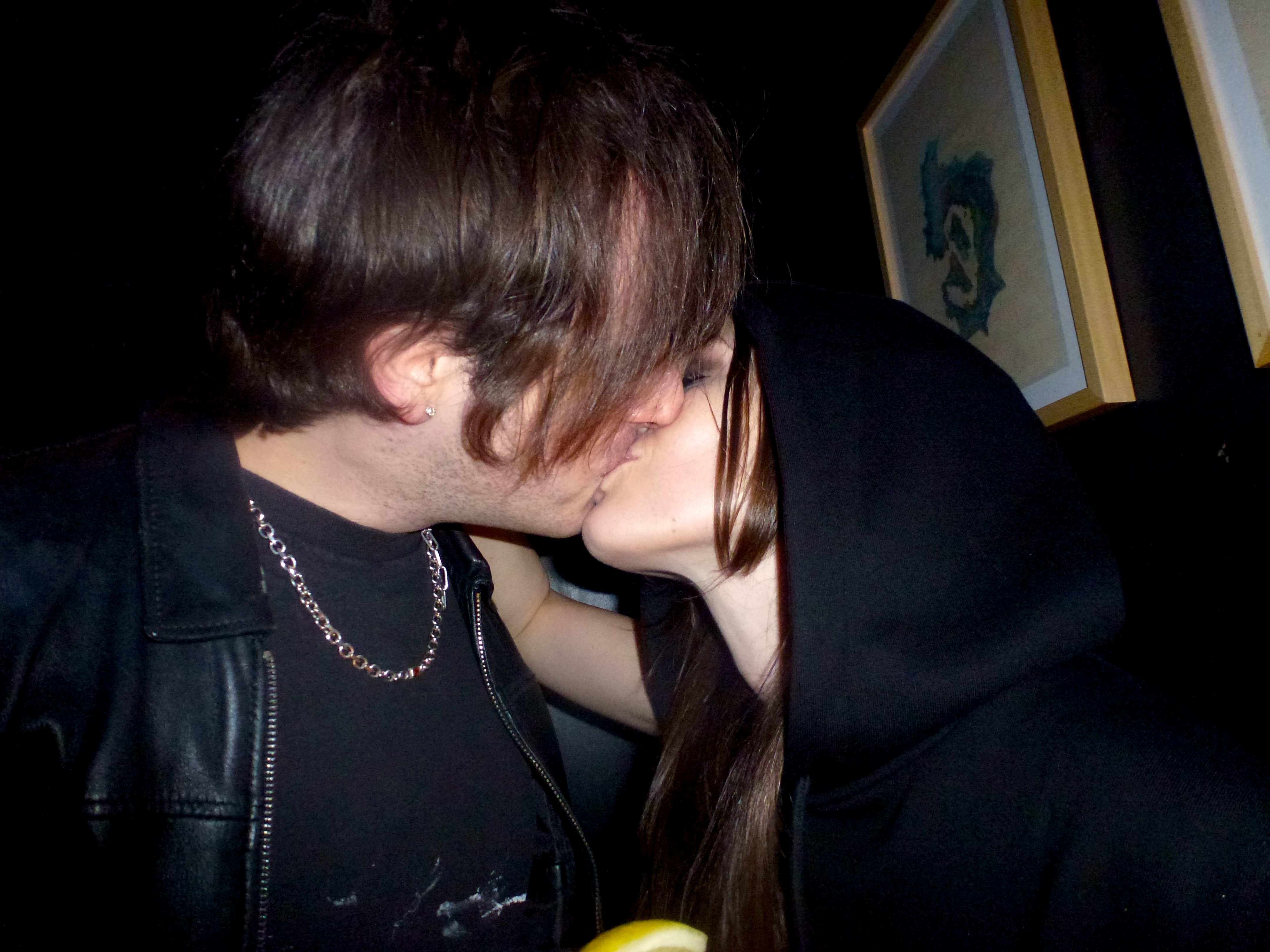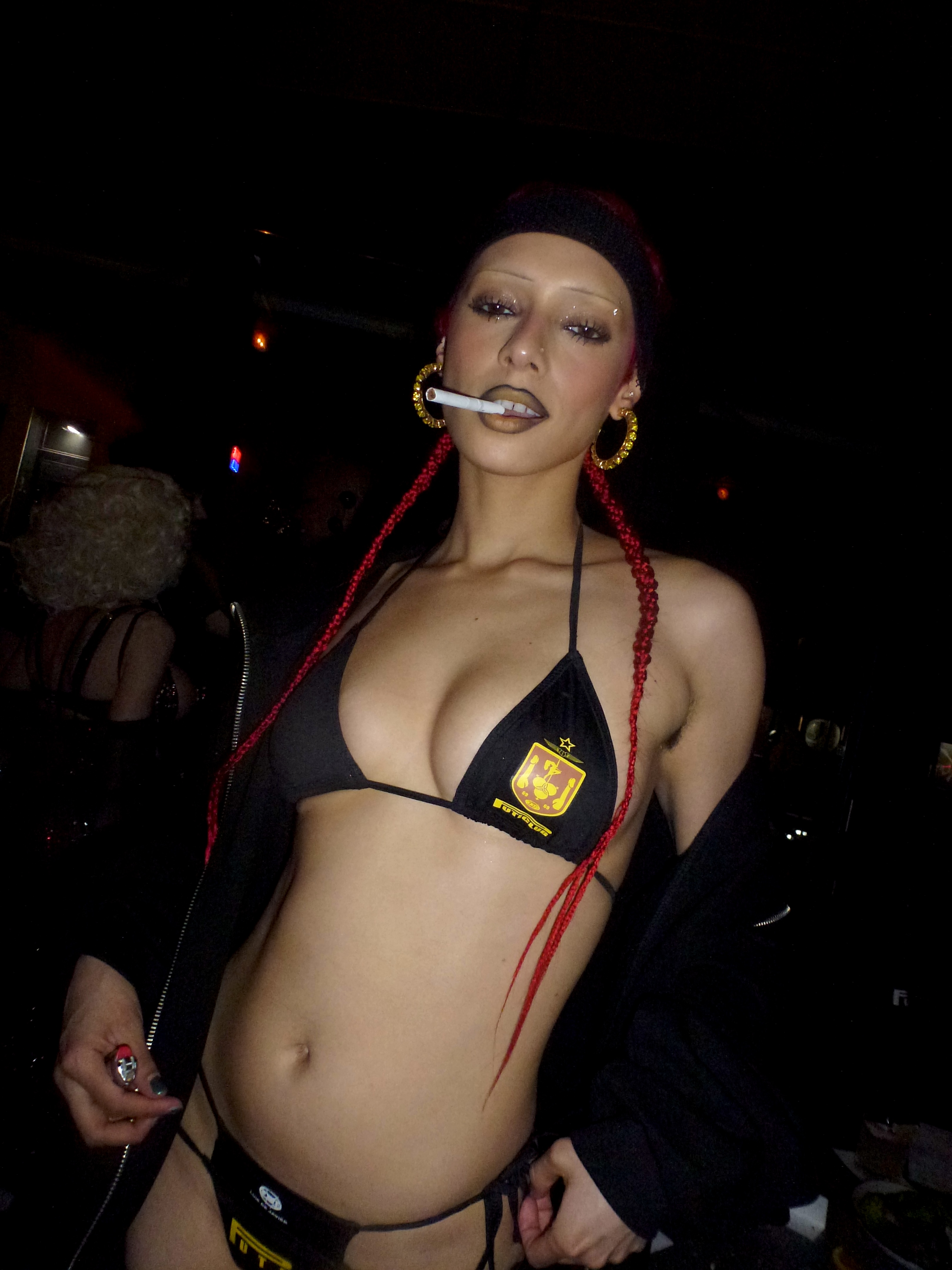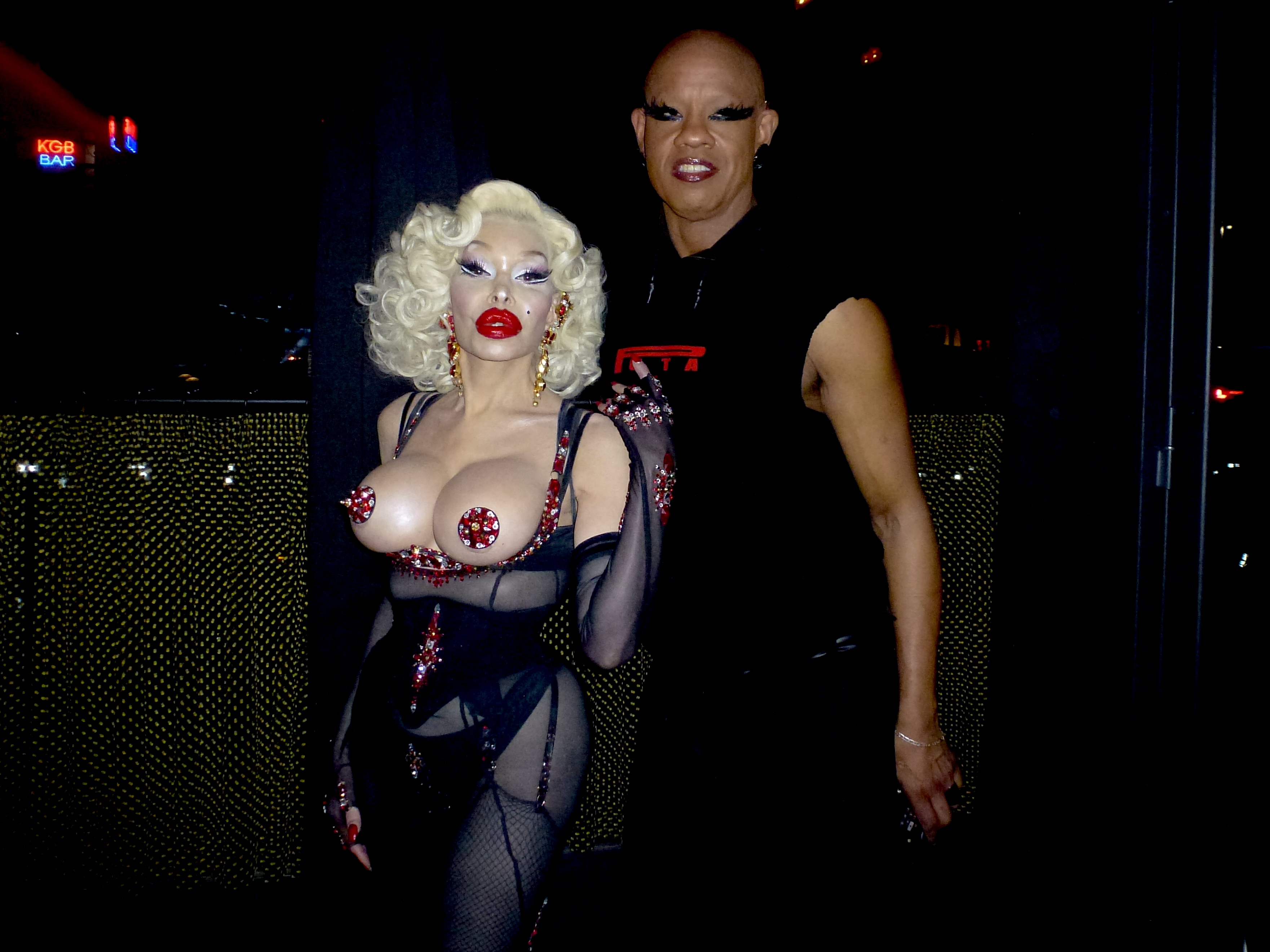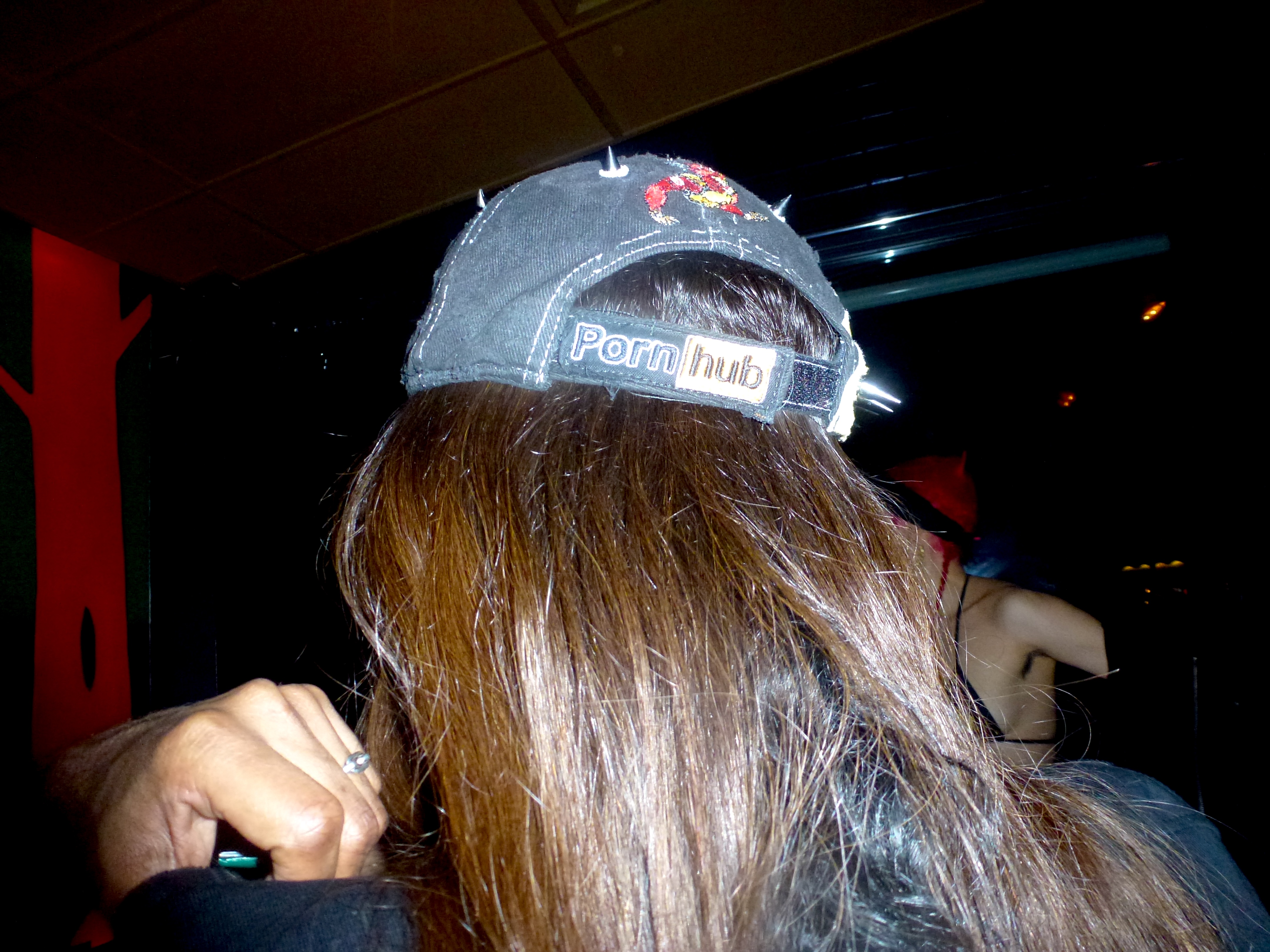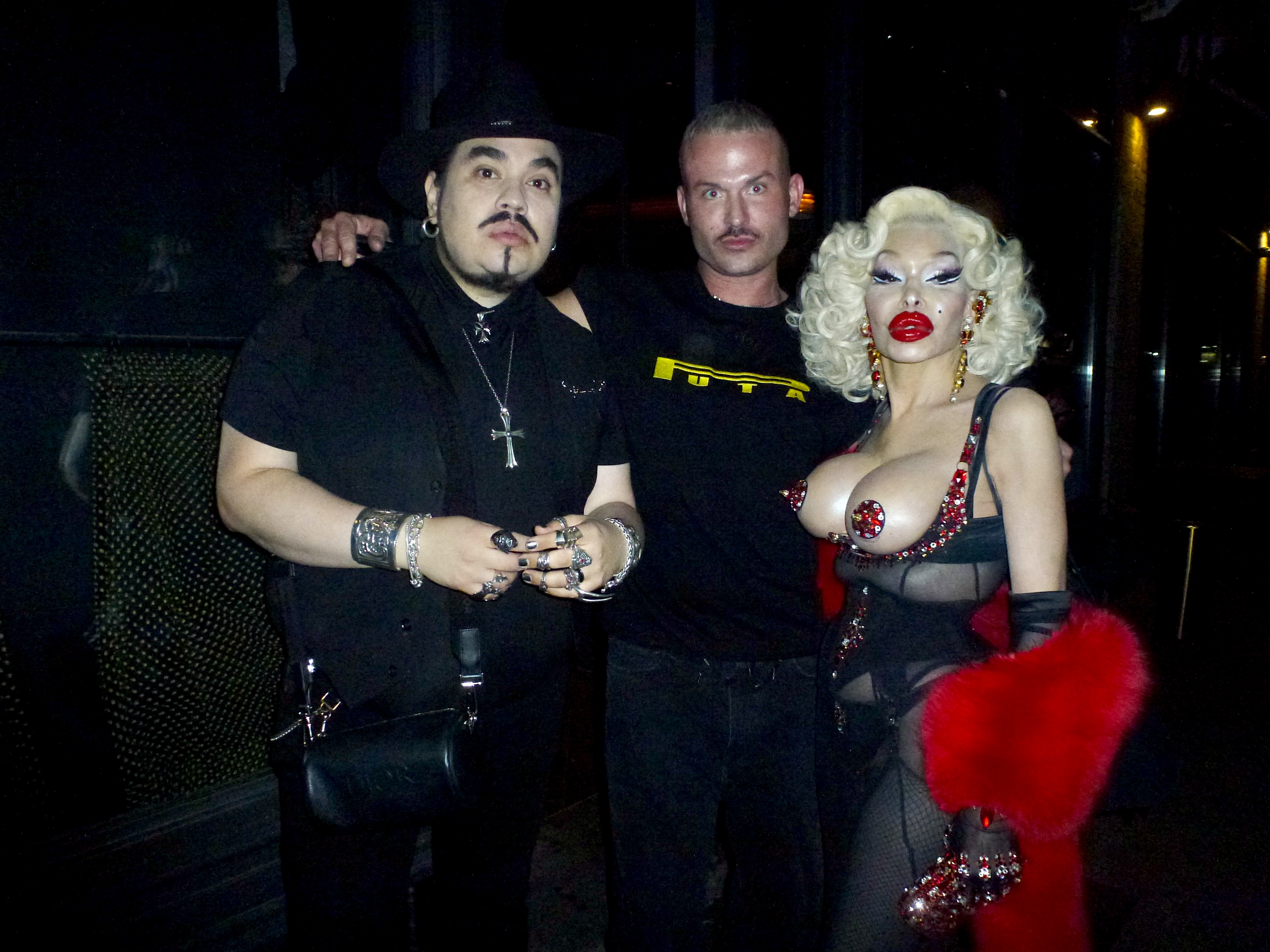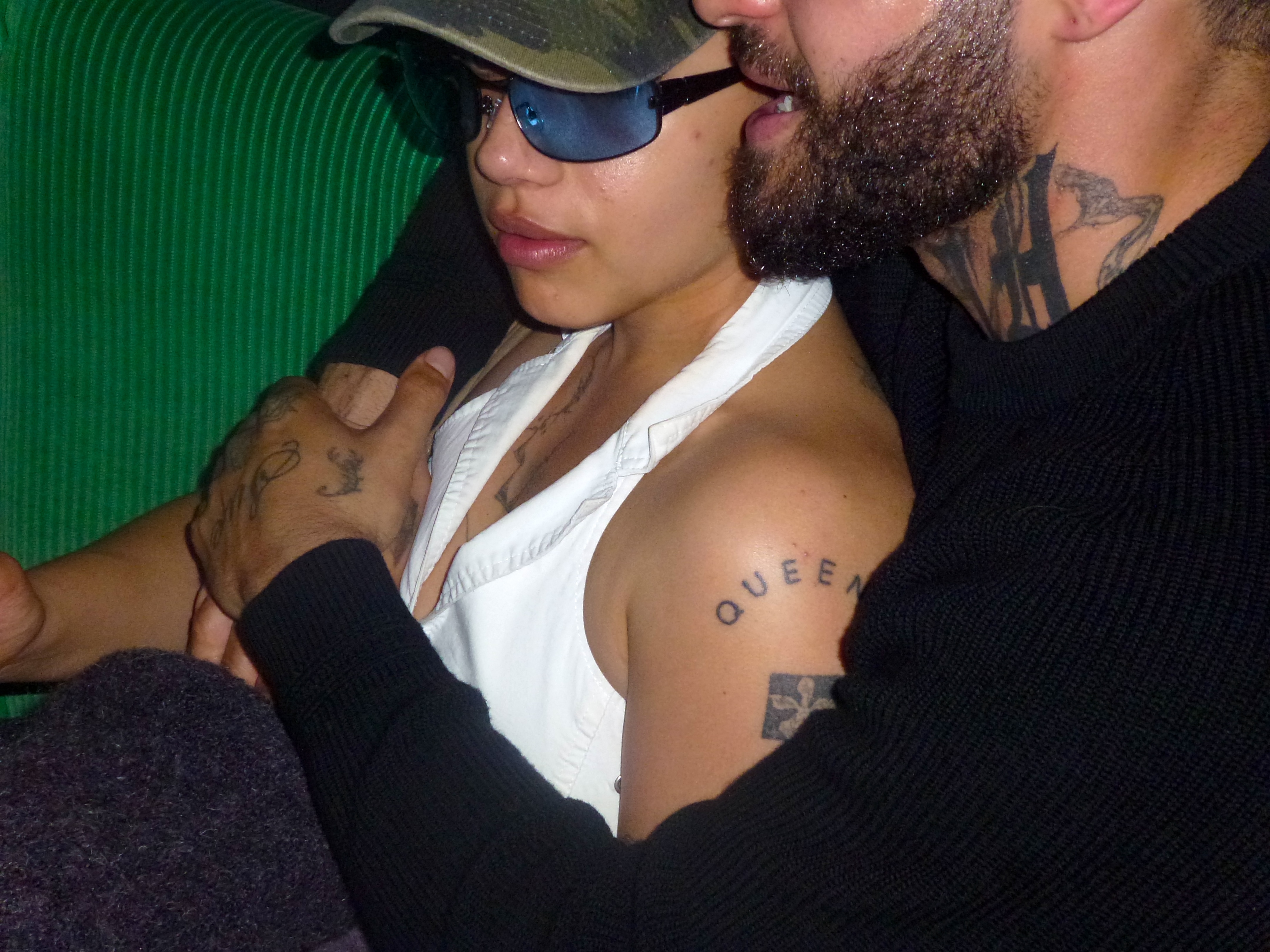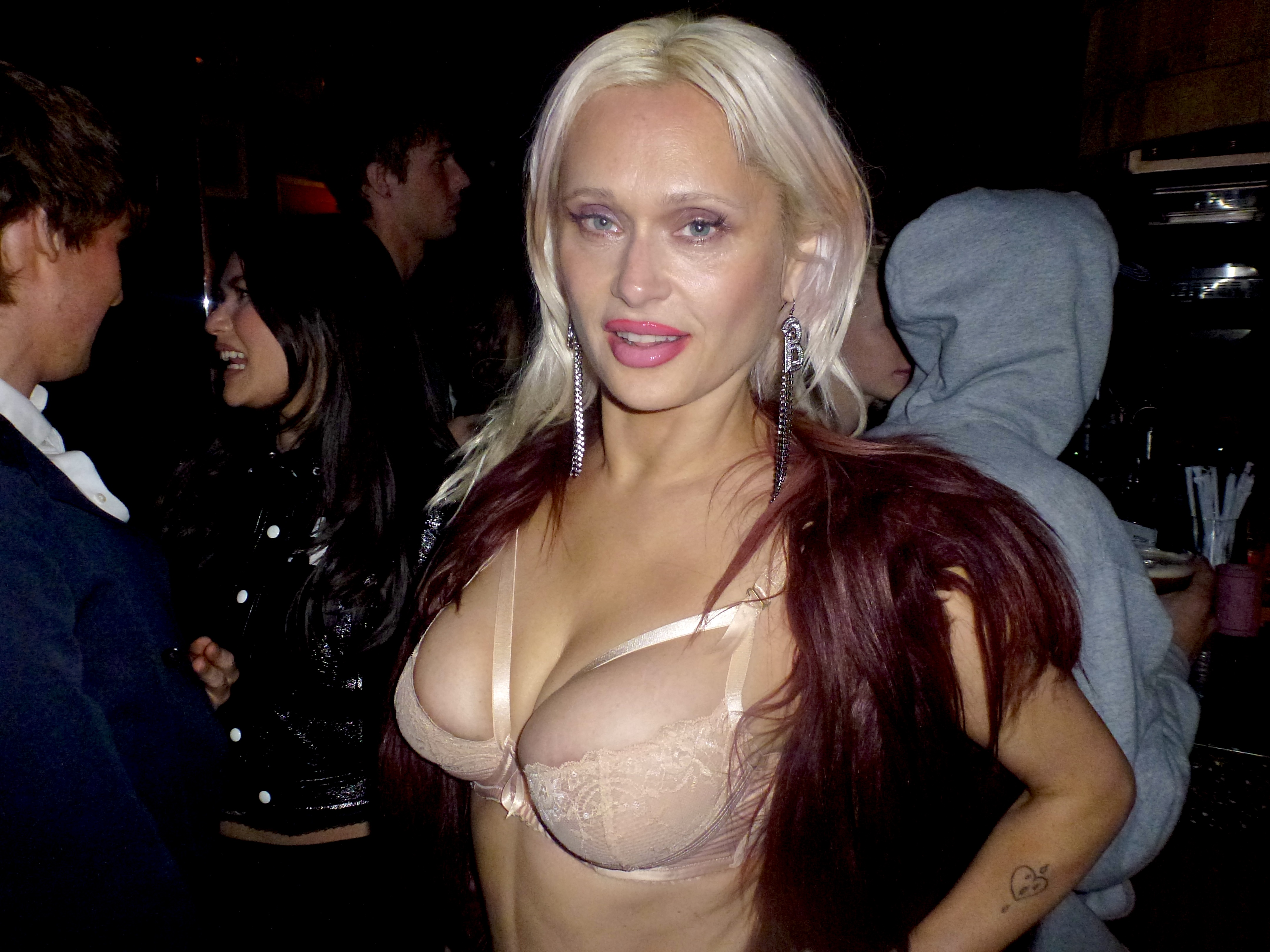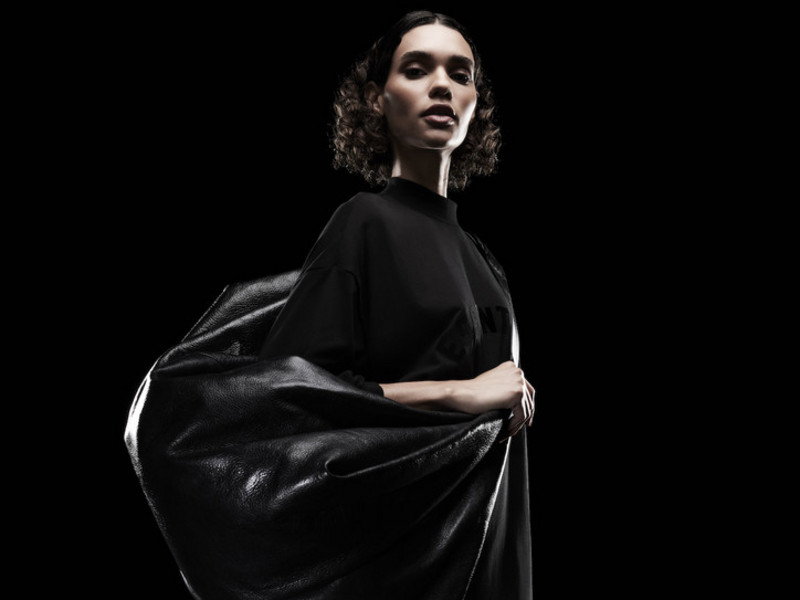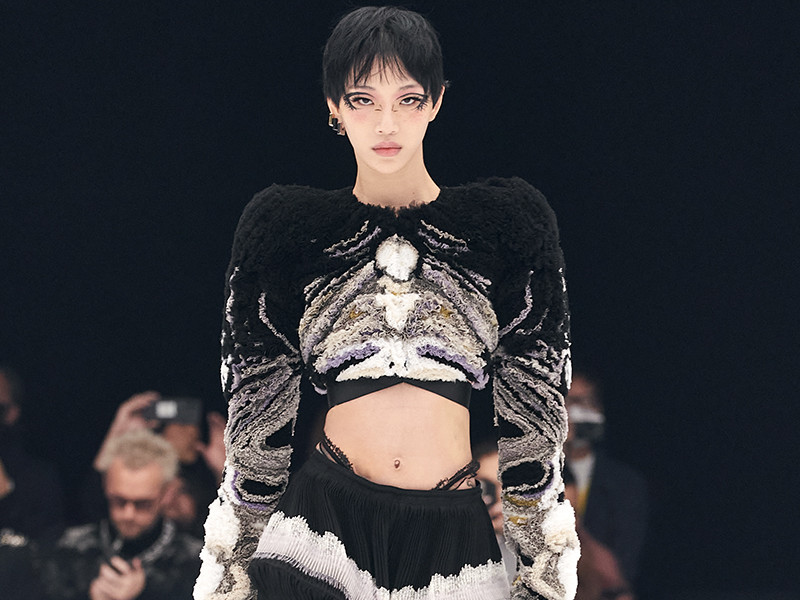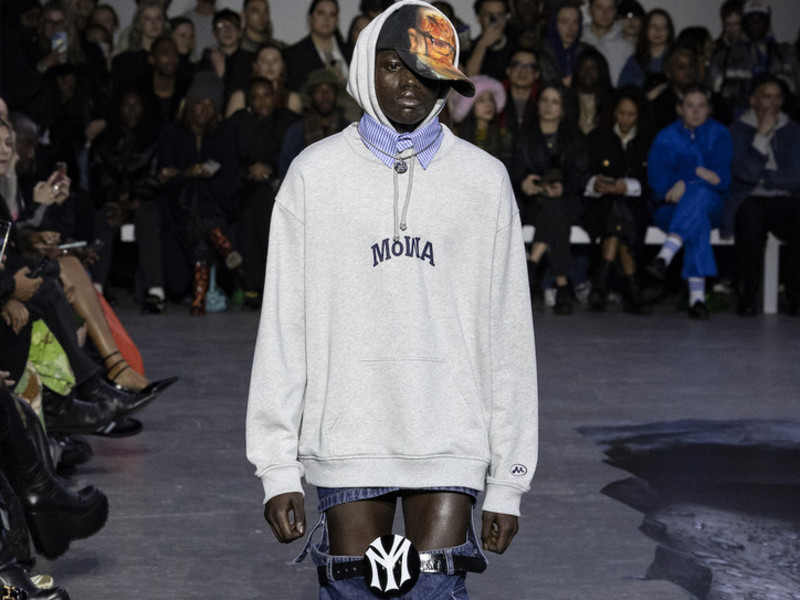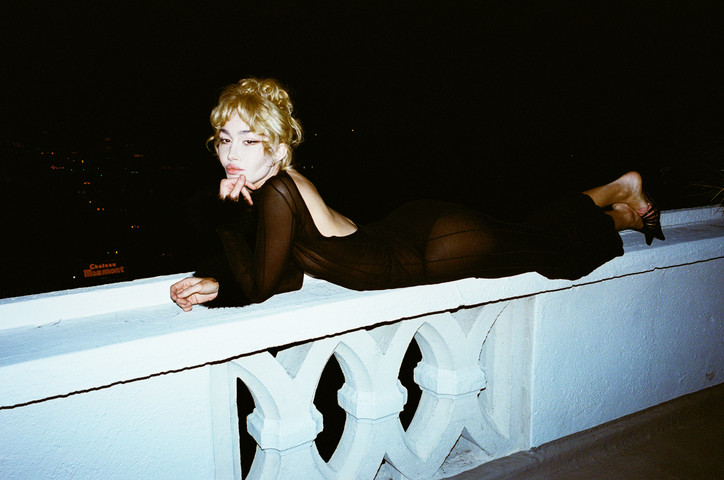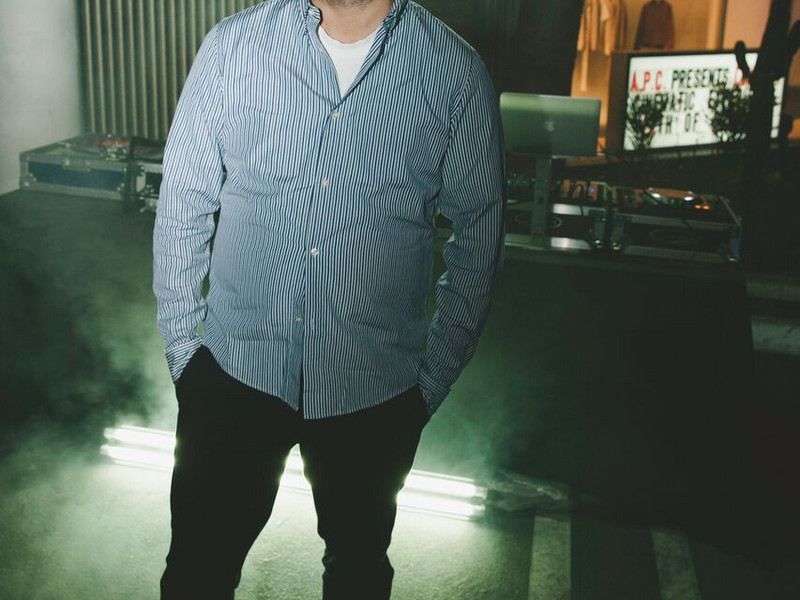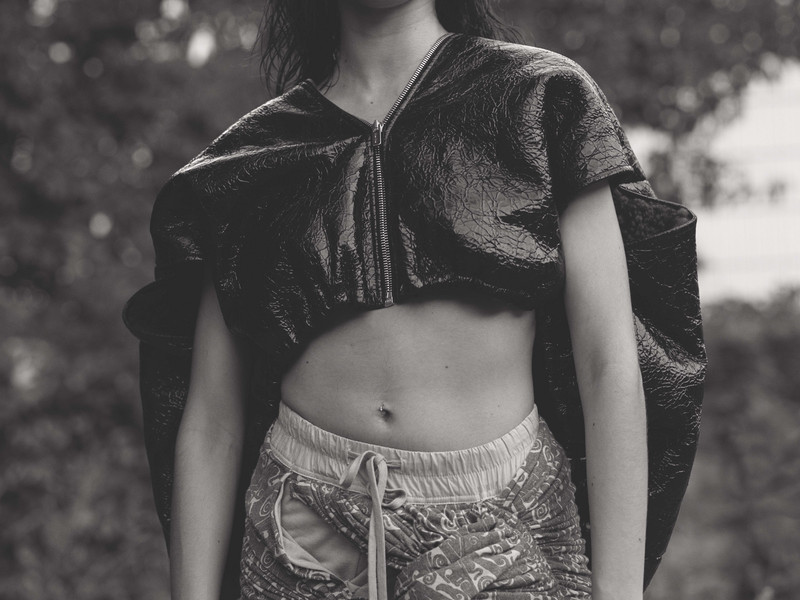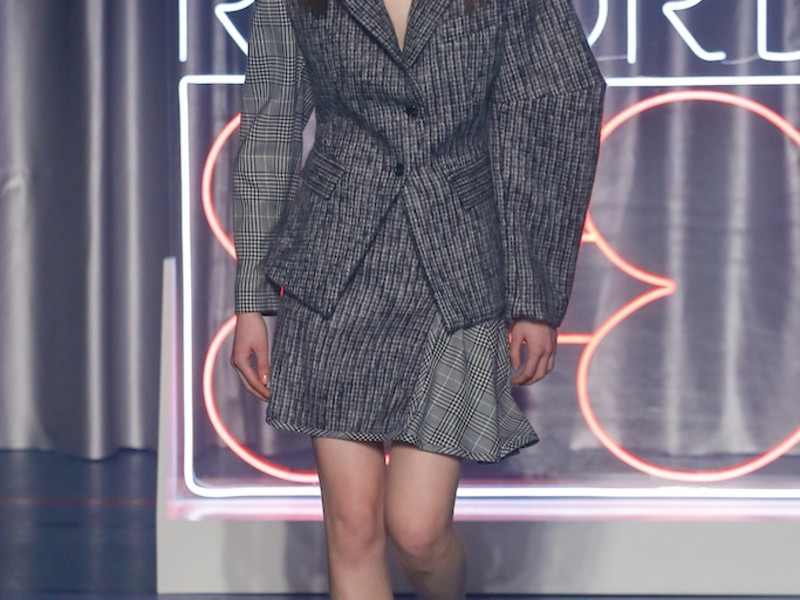Ricky Harriott at your SRVC
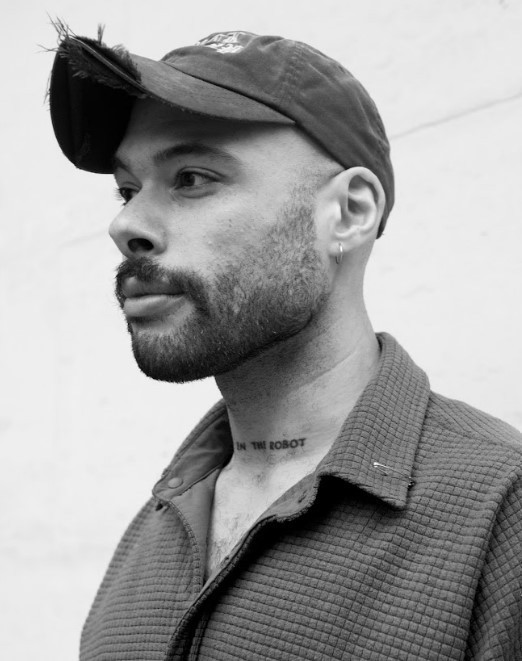
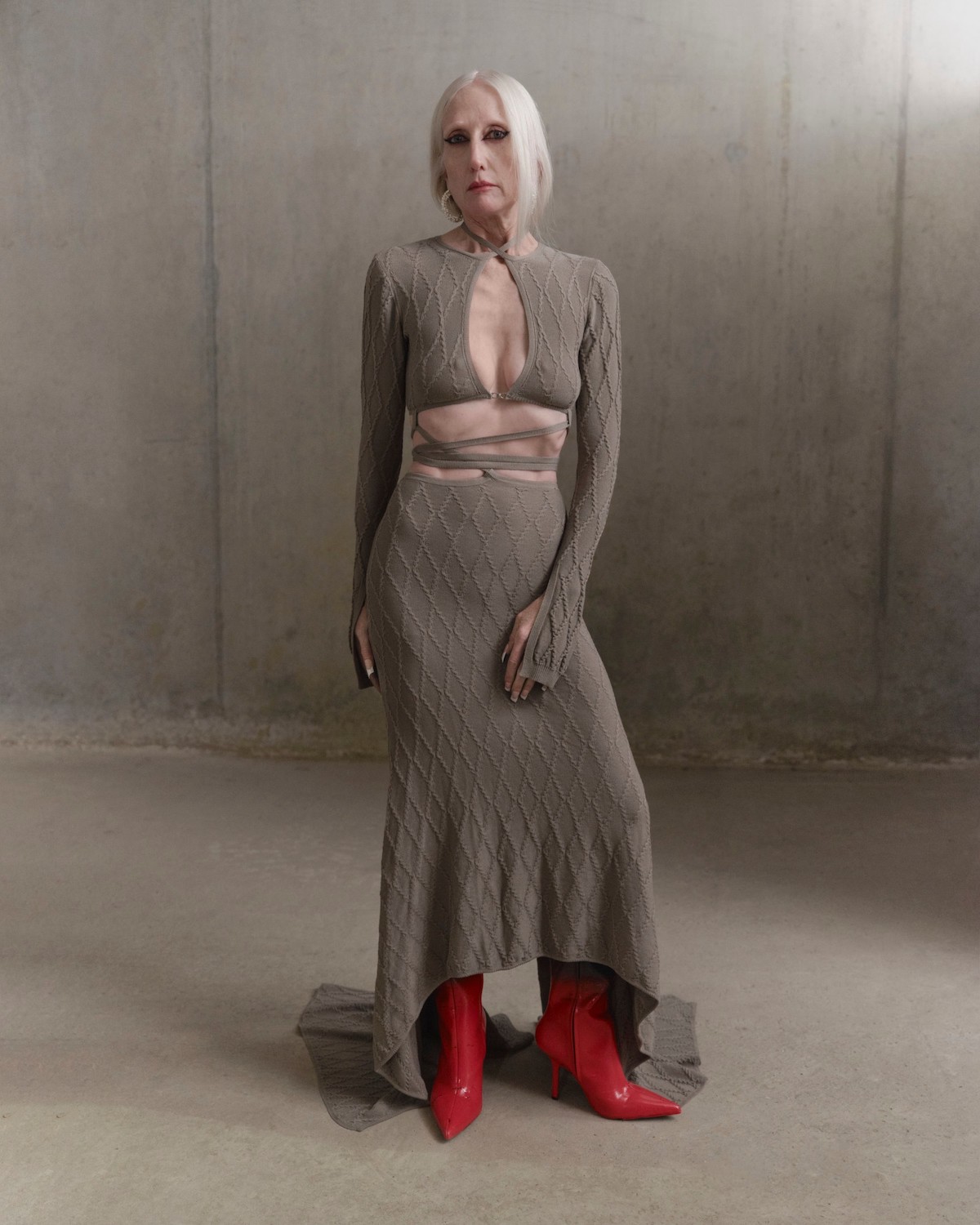
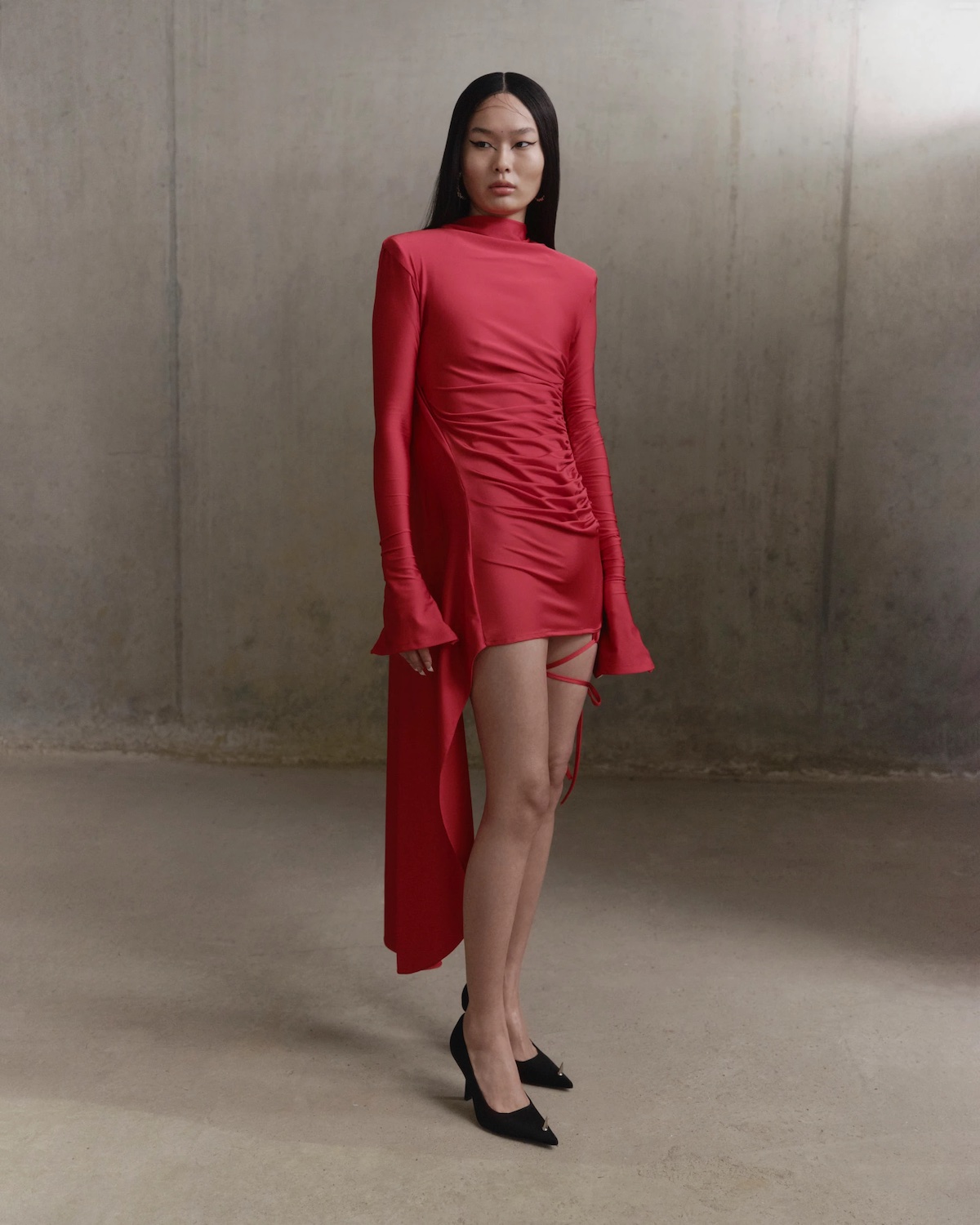
So why womenswear?
Well, I think ultimately, the reason why I decided to go into women's wear is simply out of the fact that growing up my biggest influences and caregivers were women. So I naturally, just through life experience, found the transformative nature of women in the day to day quite fascinating. So when I began drawing, and kind of illustrating, when I was a child, it was always with the intention to kind of transform women I knew or was inspired by so I think it was just through like natural fascination in the way I was raised by the women that raised me.
Any childhood obsessions that still surface in your designs?
I had a pretty obsessive fixation on comic books as a kid, comic books and video games. And I used to really gravitate towards like the female superheroes. Well, the female characters, and I think that that was a mirroring of just how I saw my mom and my stepmom. And I kind of loved amplifying that in my design. So my design intentions always with this idea to kind of be amorous and make women look powerful and important and progressive. And I just always loved as a kid seeing the woman in power, especially like in the X Men like Phoenix. My everything, so I kind of did that through reading and media.
How has your design process changed since you started Wesley Harriott in 2016?
When I started Wesley Harriott, that was a real opportunity. I started the brand with the intention to kind of show people what I could do. So when I started that brand, I was quite literally, I was teaching at the time. And I would teach all day, and then I would sew all night. So my design process when I started was to just kind of beg, borrow and steal and get my ideas out as much as possible, a lot of my work is draped on the body and on the stand. So I was working with a lot of found materials, and kind of just getting out my sketches and draping them, trying to form things that way. Everything was very much done on a budget back then.
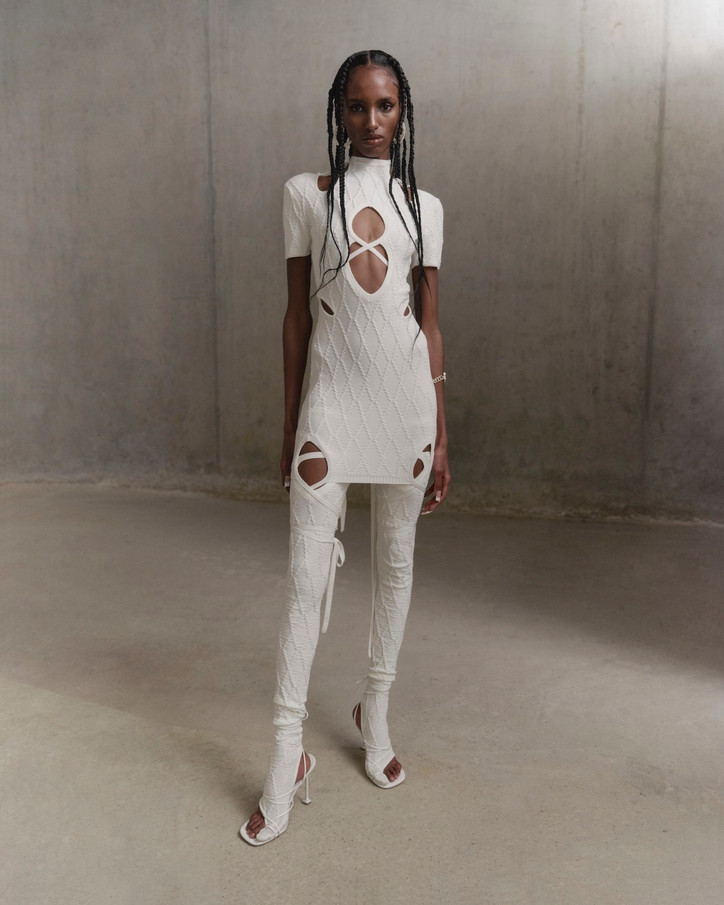
So I was working really hard to try and just kind of put down my ideas as best as I could with as little as I had. So the process was very much organic—draping, cutting flat—but nothing particularly… I was a bit limited back then. So it was kind of just with the opportunity to do the best I could. But that obviously evolved as I progressed, I was trying to save a lot of money as I was working. So I would invest in like, I think gutters or invest in interns and stuff like that.
Women figures, such as SZA, Rosalia, and Solange, have been seen in your designs. Did Wesley Harriott inform your direction at SRVC?
It's interesting, just to highlight that point, those women that have worn my previous works, they're all women that I would consider muses and all women that I truly deeply admire. So when I even designed those clothes, they're always in my head to begin with. So I find it quite a beautiful thing that organically those women found the brand that I always really loved. It wasn't through me like trying or chasing it kind of organically happened. And I think as they found the brand, I started to have other women naturally start to find the work.
I took a little time out from with the Harriet and I was working at Vetements as a designer. And that was a really great experience. I was really proud to join that team because it was a brand that I really respected and loved. And then when I came back to London, I was presented with an opportunity to start a new brand which became SRVC. So SRVC came through natural career progression. And what SRVC allowed was for me to kind of really push forward an agenda that both me and the SRVC team believe in, which is addressing modern women's wear for women at different stages and places in their lives. So SRVC came very naturally and it feels like what I've been working on and what I've been developing and kind of trying to hone as a designer. SRVC is really an amalgamation of all of those experiences.
What makes SRVC self-stylable?
So with SRVC, the team is predominantly women. And as a man, I would never be so arrogant to not have incredible council of the women that I work with. So the intention of SRVC is always to, for example, a blazer a piece of tailoring. What can we do with a piece of tailoring that keeps it to its purpose, but amplifies it for a woman in today's world? How can we make that piece sustainable in her life, longer? How can we make that piece mean more to her longer? so we think about ways that you can sell style it. So that can be for example, a blazer may have a few incisions in the seams, which allows you to belt it at different points to create different silhouettes. The Blazers we did last season, they have removable shirt cuffs. So just for these little additions and modular details, it allows a woman in today's world to have a piece of clothing and make it work for her rather than her trying to feel like she's black clothes. So it's about creating steatosis between a wearer and garment. And I really enjoy presenting that as something to amplify the female experience in today's world.
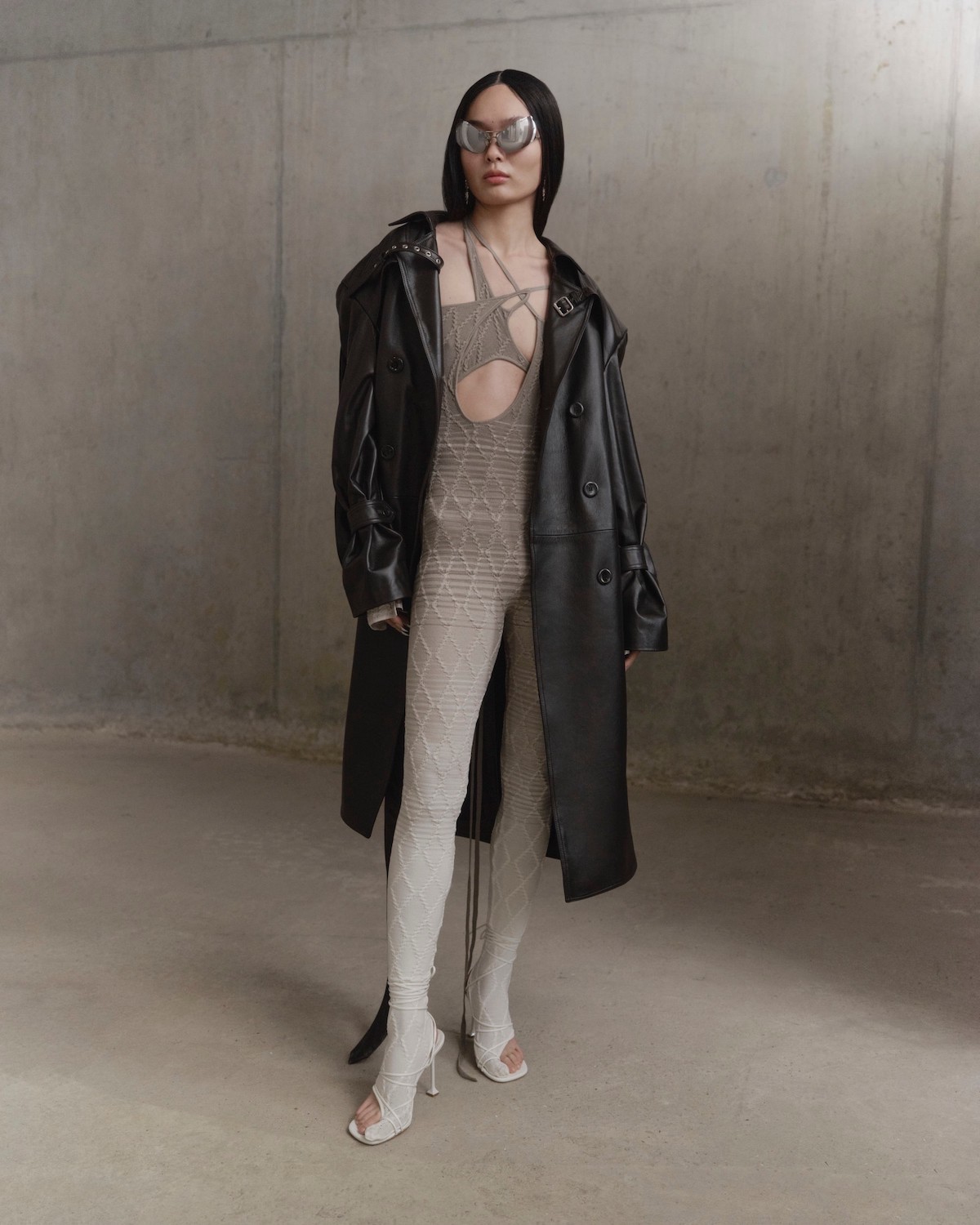
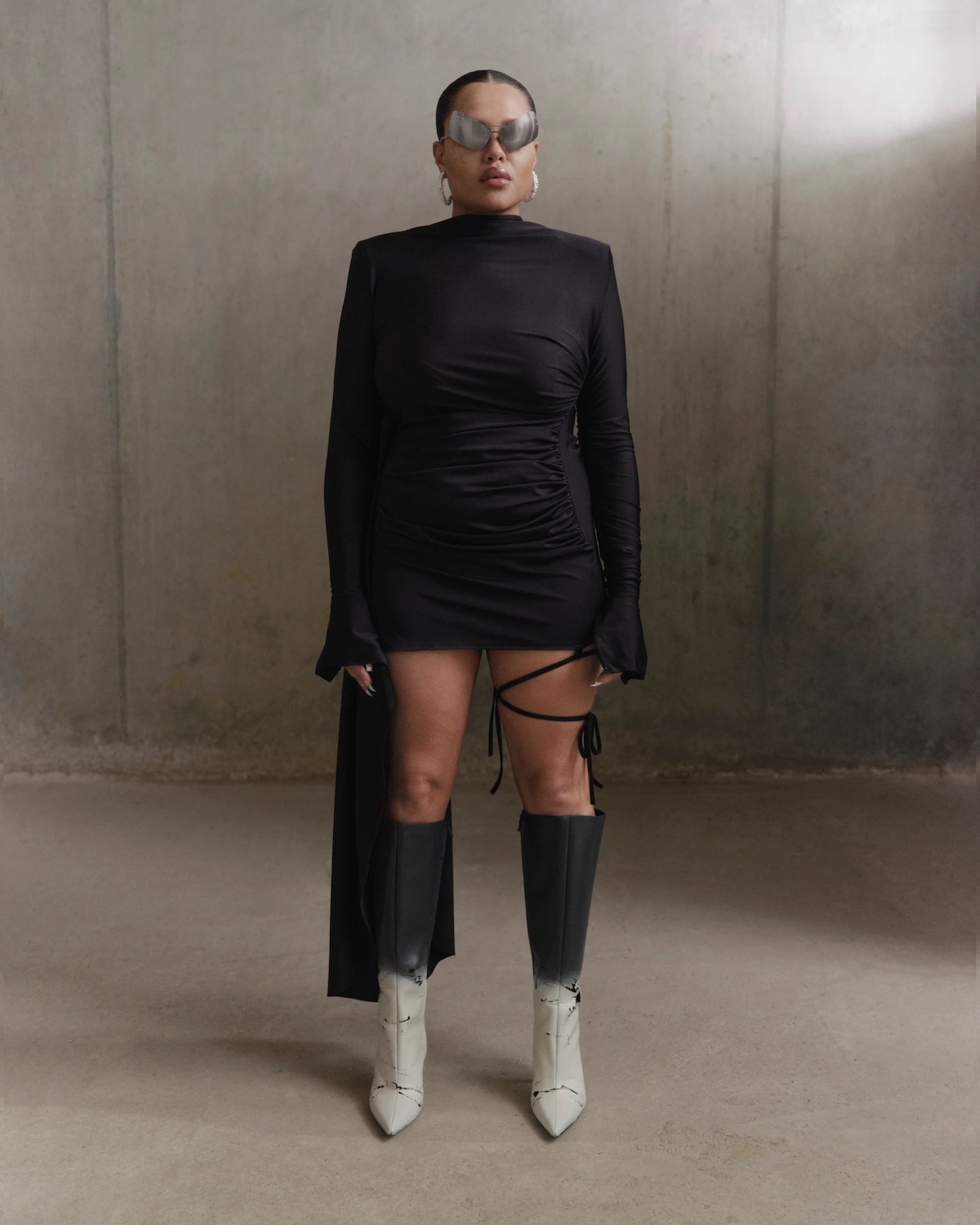
How do you strike a balance between both past and future design modes?
I think for me, when we think about the past, we consider ‘what is this piece actually for?’ Like if a coat is going to be a coat, let it be a coat and then futurism is like, how can we develop that piece to be more than it was yesterday. So futurism, I think, sometimes in design when you think of Futurism, you think of silver and space age. But for me, Futurism is really addressing what is next for something that already exists.
Yeah. And that balance is, I never want one of our clients to pick up a piece and feel intimidated by it. I always want her to pick up a piece and feel excited or inspired by it. So it feels, I think there is such a beauty in something feeling both nostalgic and fresh. And I think that's the balance that we're really trying to hit. It's like having an old pair of jeans, but feeling brand new at the very same time.
On that note, what's next for SRVC?
We’ve been very lucky. We're a small team, we do so much of our process in-house. And we've been super lucky to be in some great stores and to be in some incredible web stores. And we've got some even cooler stores coming as well, which is really exciting. But what we want to do now is try to engage with our growing audience on a more physical scale. So we're hoping to present something with our new collection during fashion week, obviously nothing is confirmed as of yet. But we're aiming to be able to invite people into the universe in a more physical way. Because I think what we what we are at SRVC at our core is storytellers. And we want to be able to tell that story in a more immersive manner. So that's kind of what we're focusing on at the moment.
